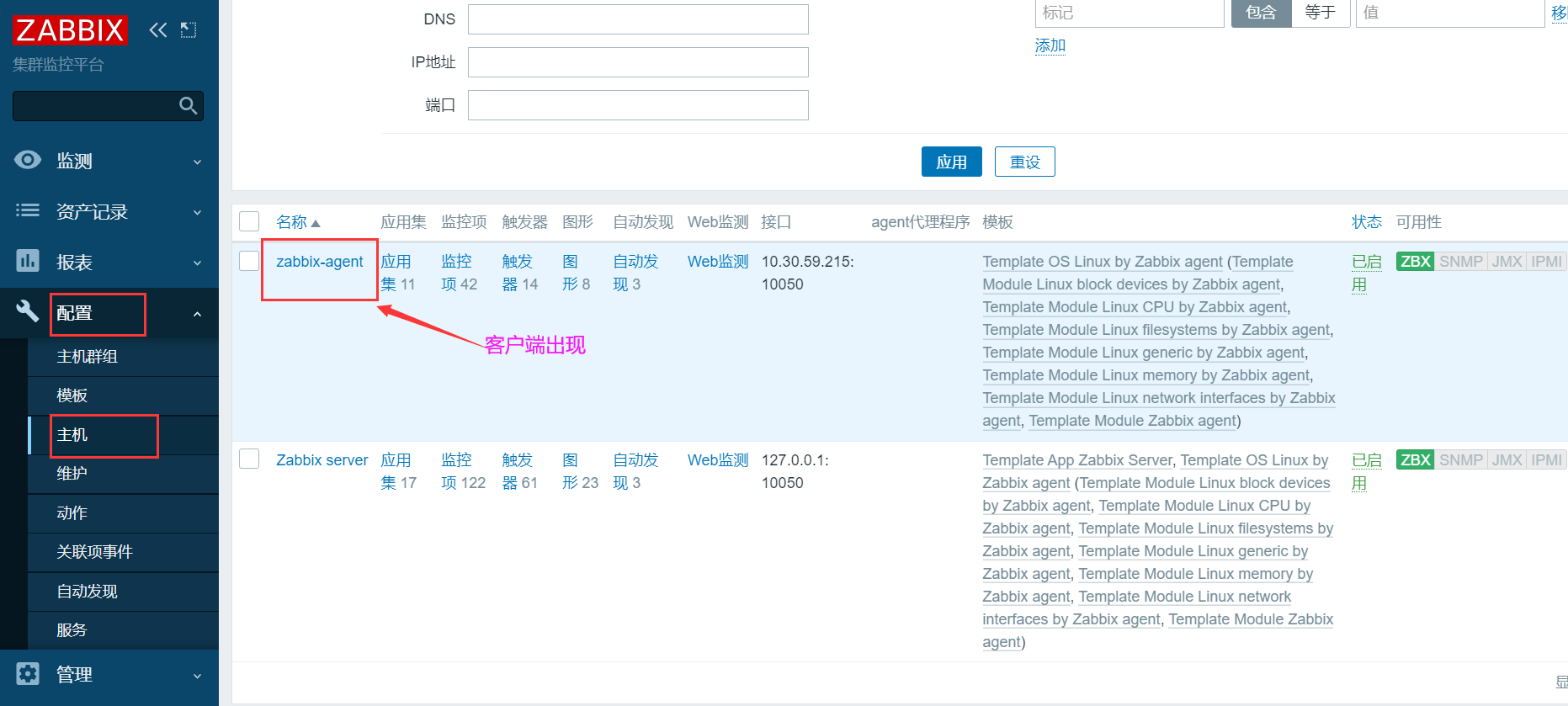Mail alarm configuration
If there is no error page, what do you think
Configuration - host

Click zabbix-agent-10.0.59.215 - Host - Update
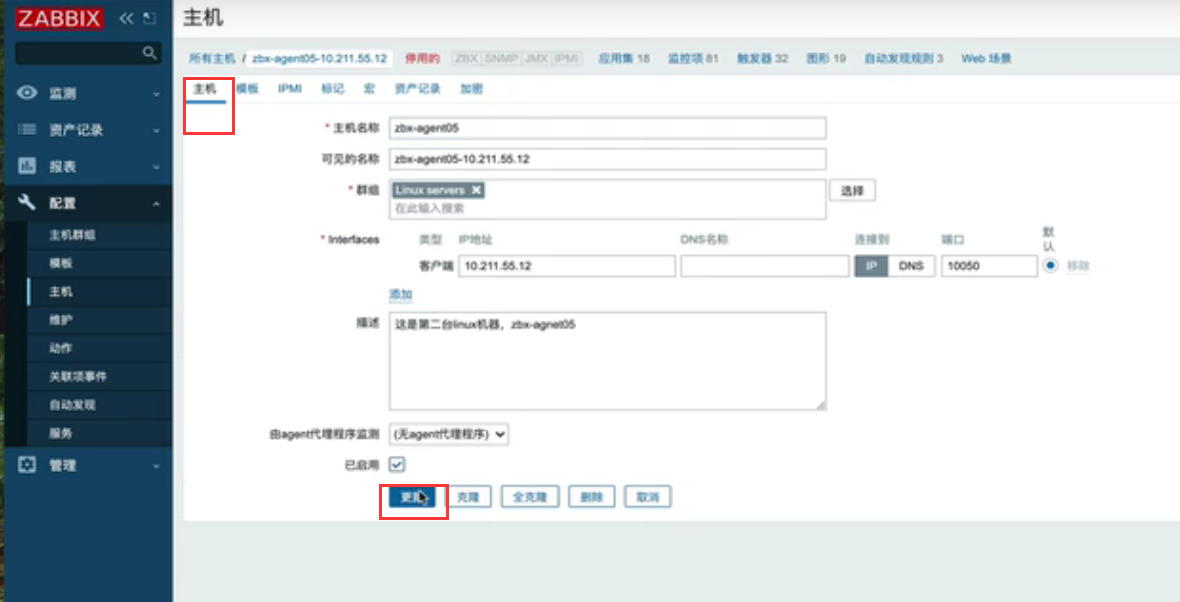
ZABBIX agent-10.0.59.215 --- started --- ZBX is gray
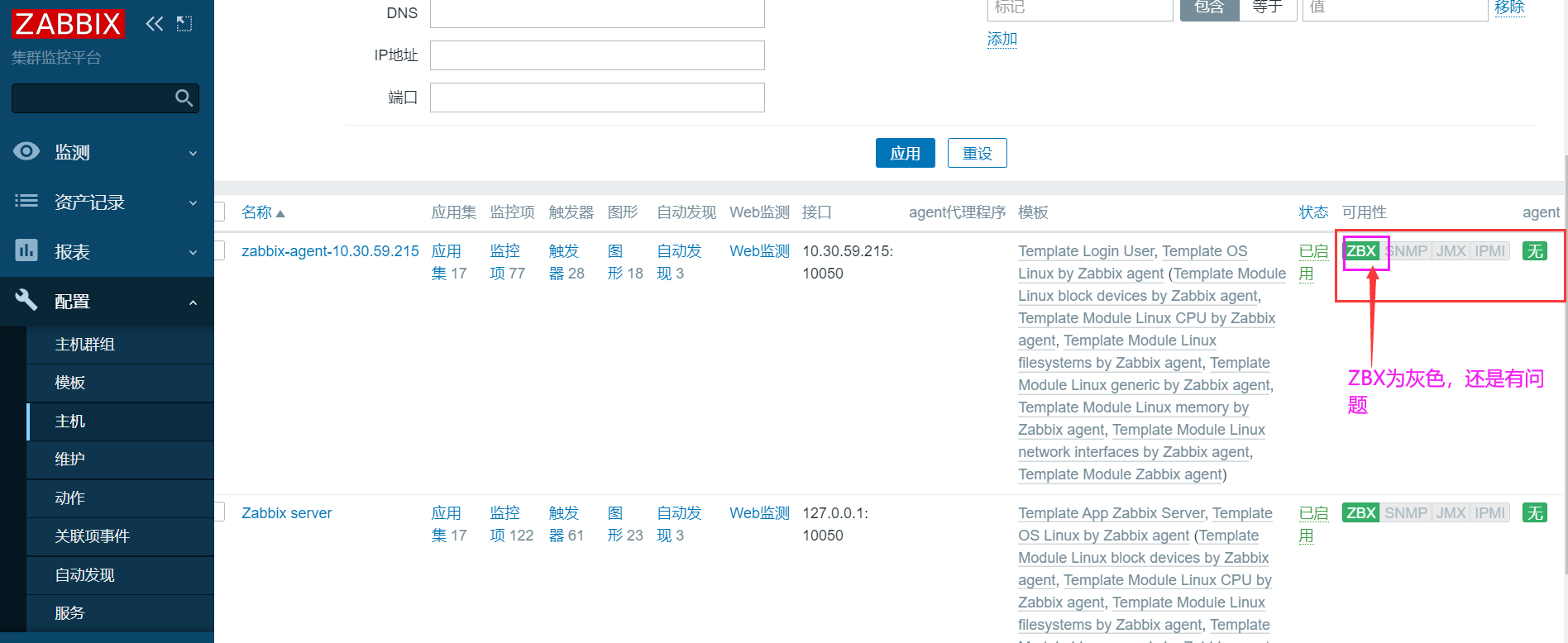
There is still an error message in the instrument cluster, the refresh disappears, and the problem (monitoring)
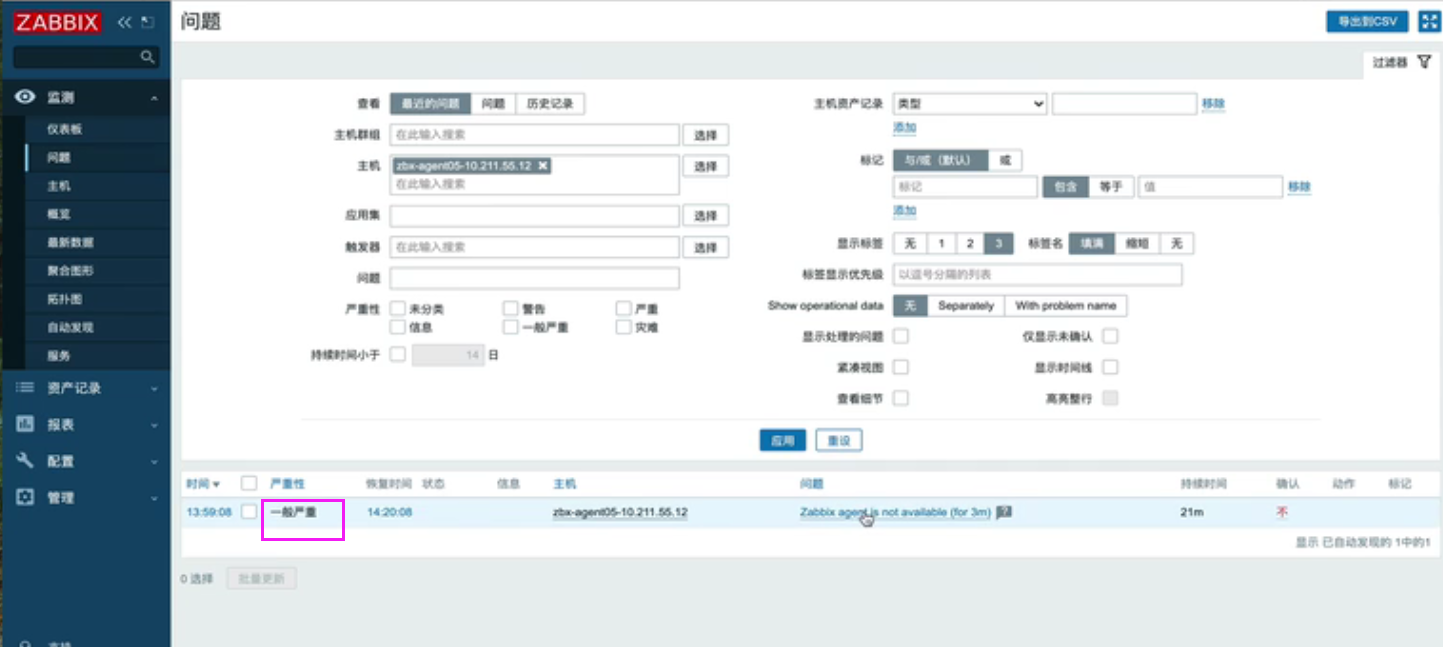
ZBX in monitoring - Host - client is gray
Configuration -- host -- ZBX is red in client
Management - alarm media type
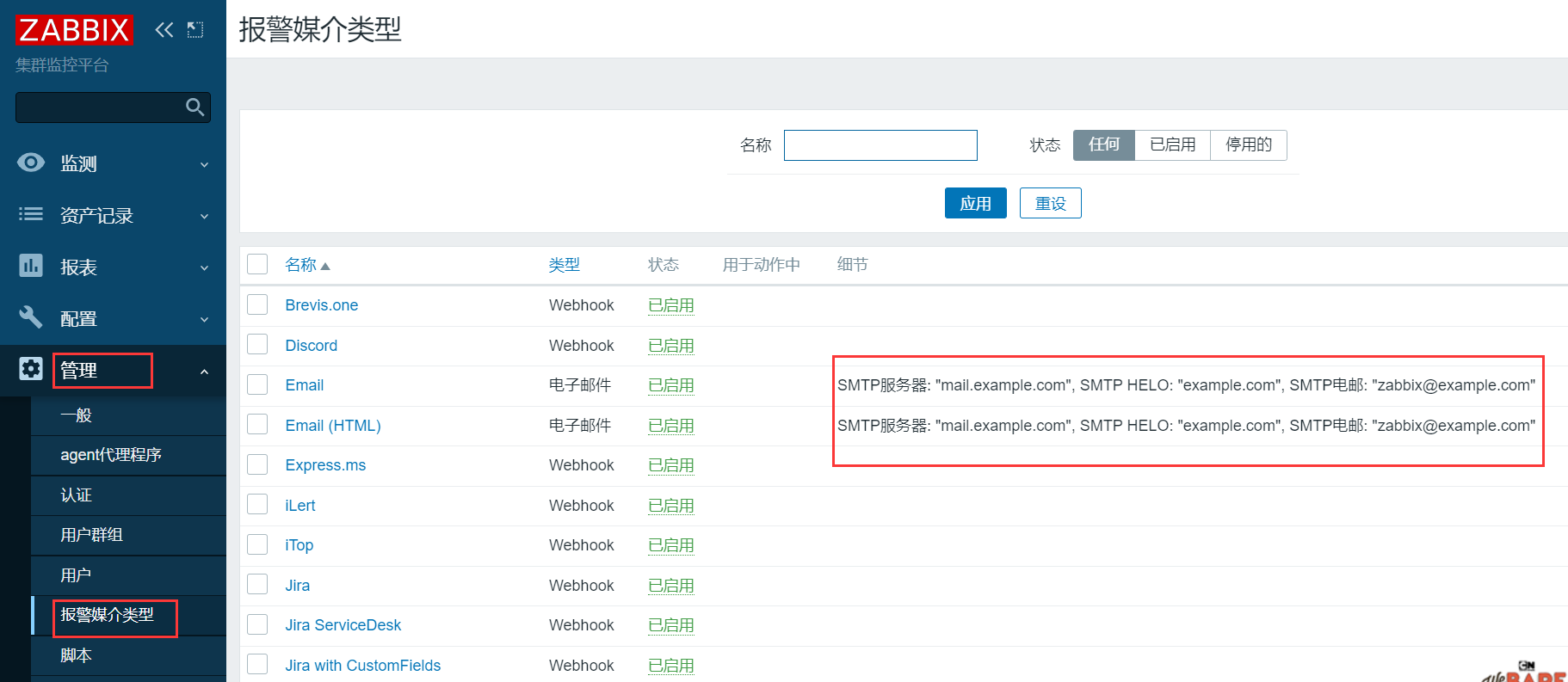
Create media type - add (password is authorization code)
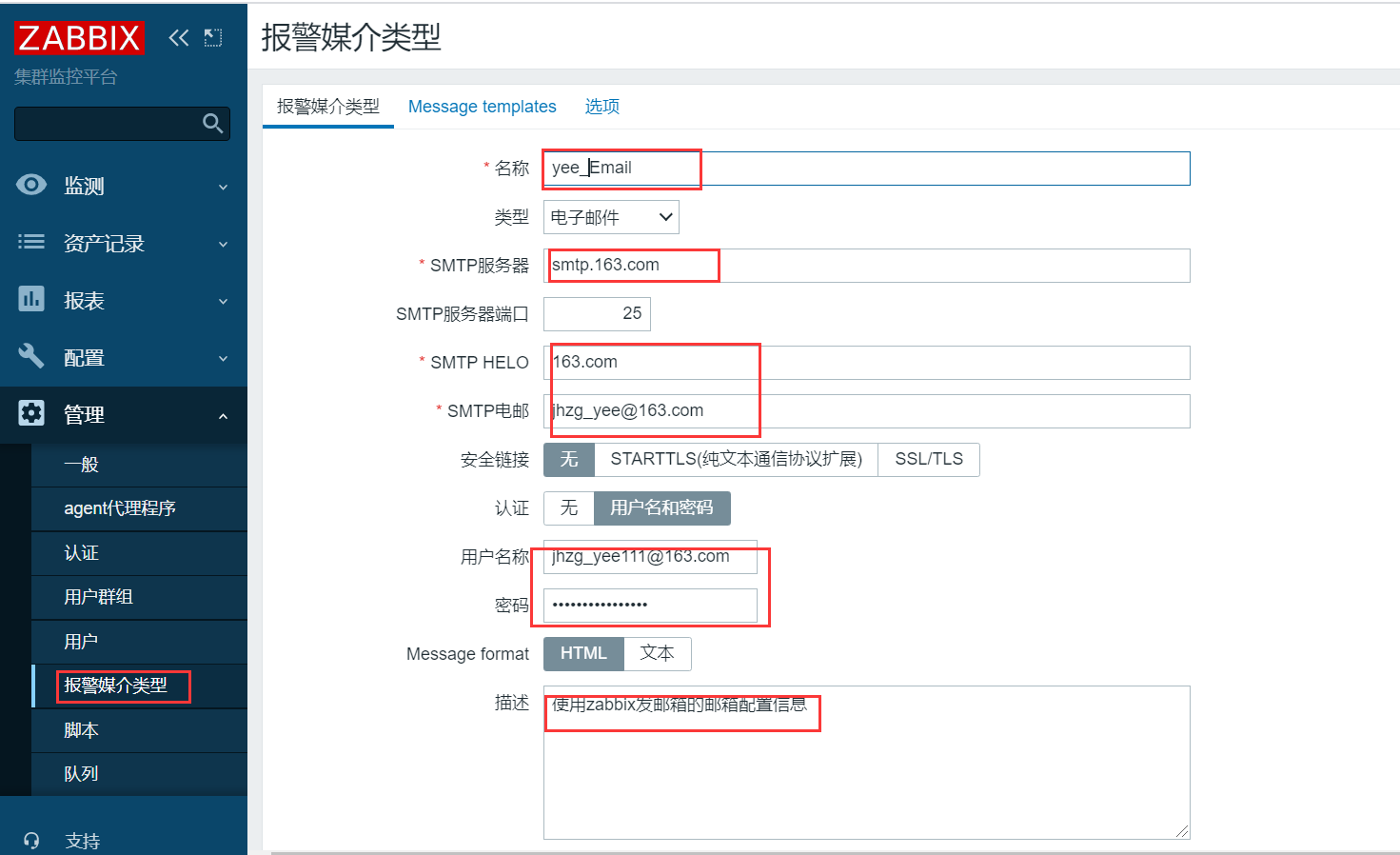
Email authorization code
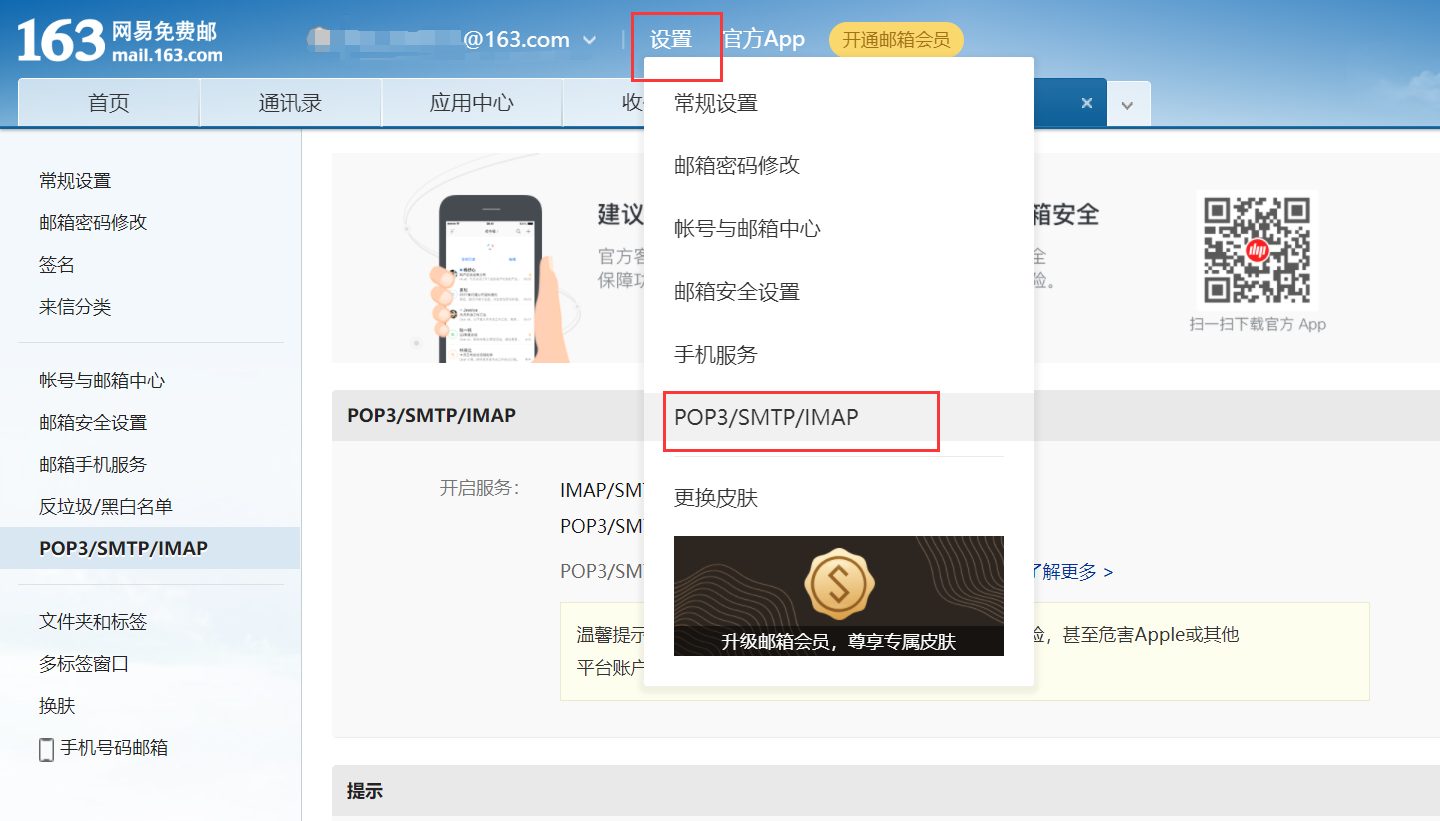
Already have yee_Email - click test

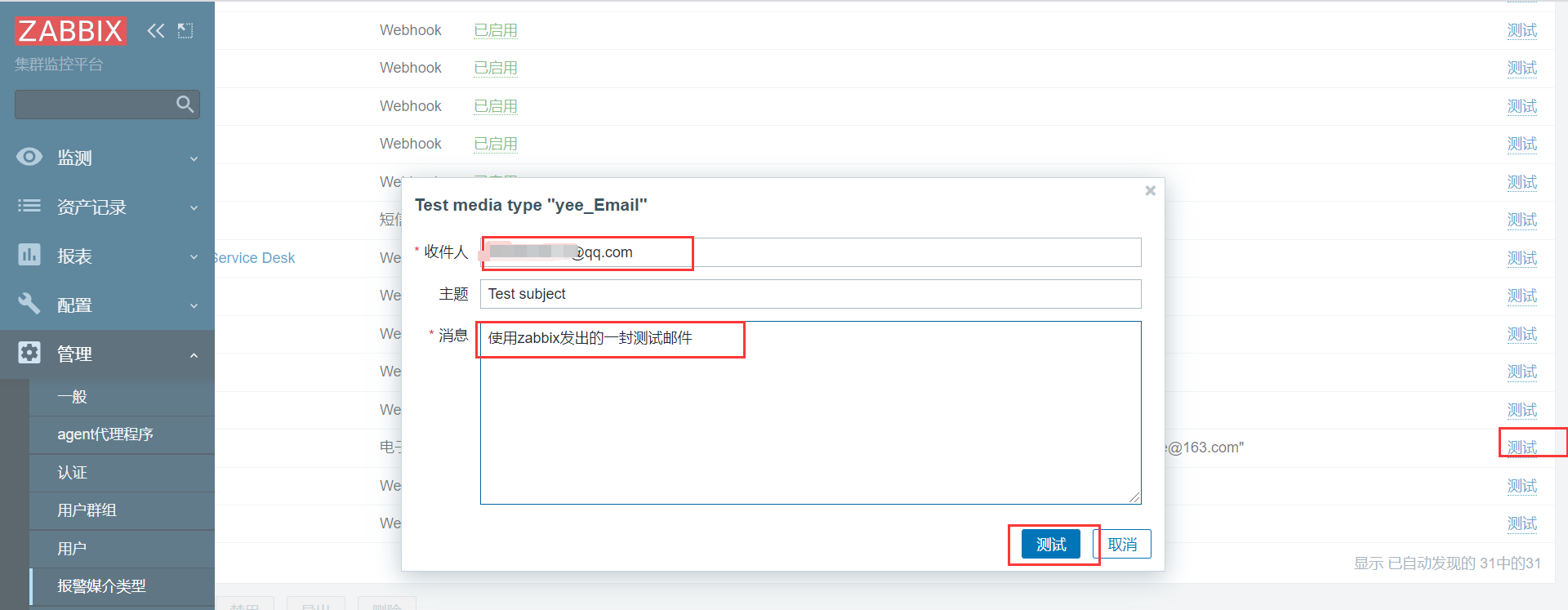
Mail test sent successfully
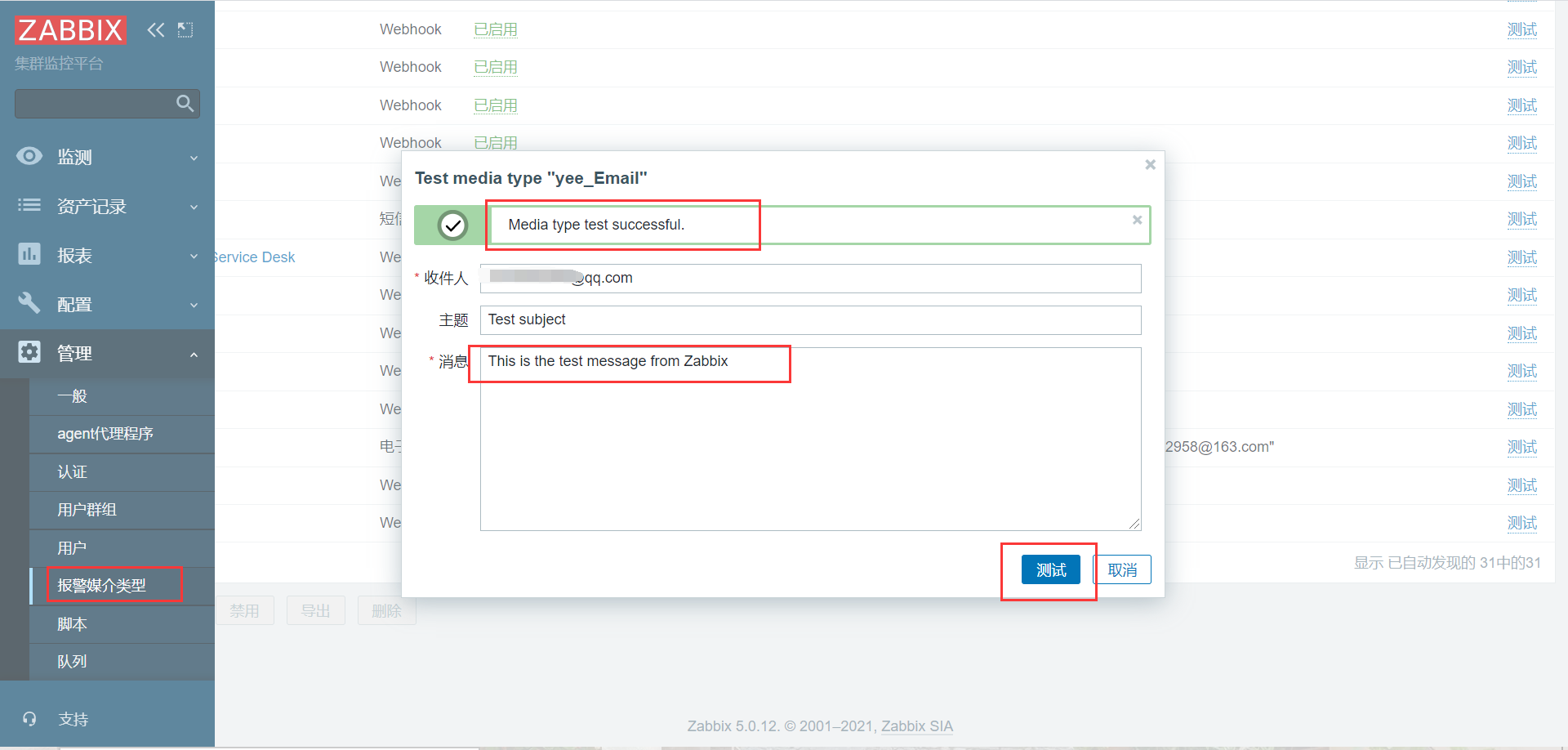
QQ email can see
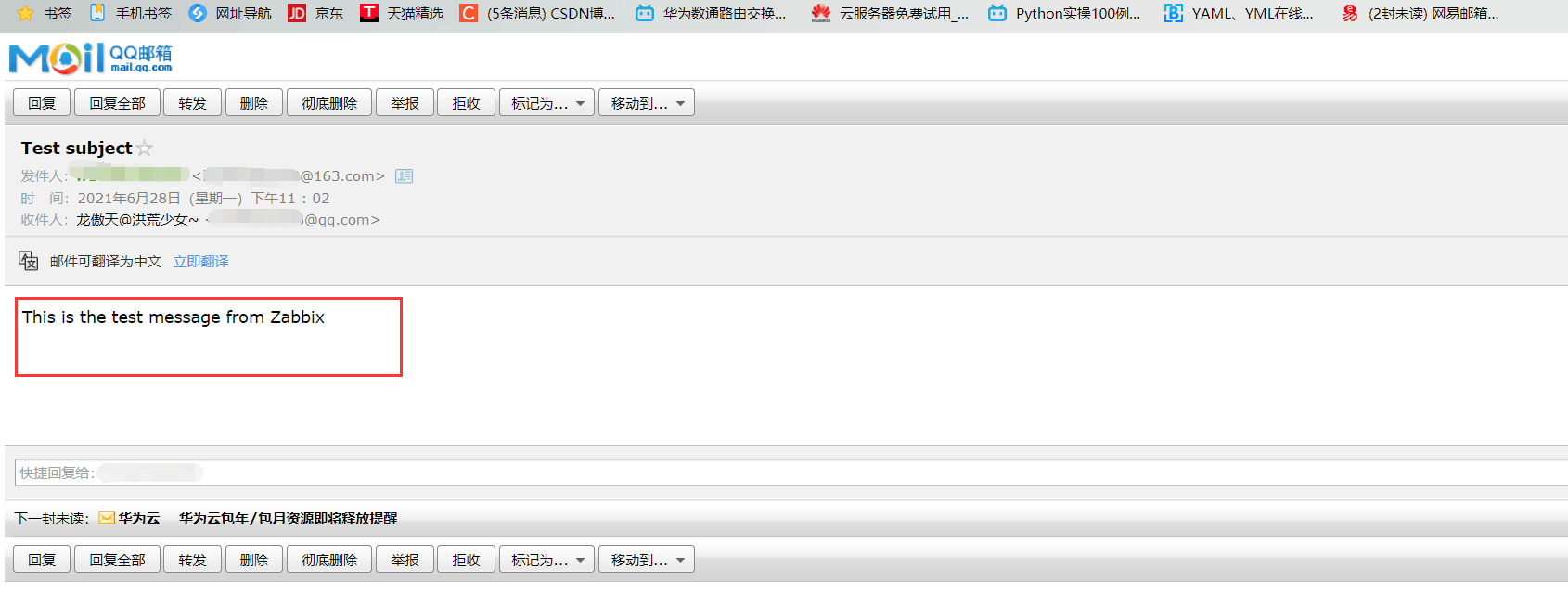
Alarm media type - create media type - Message templates - click Add
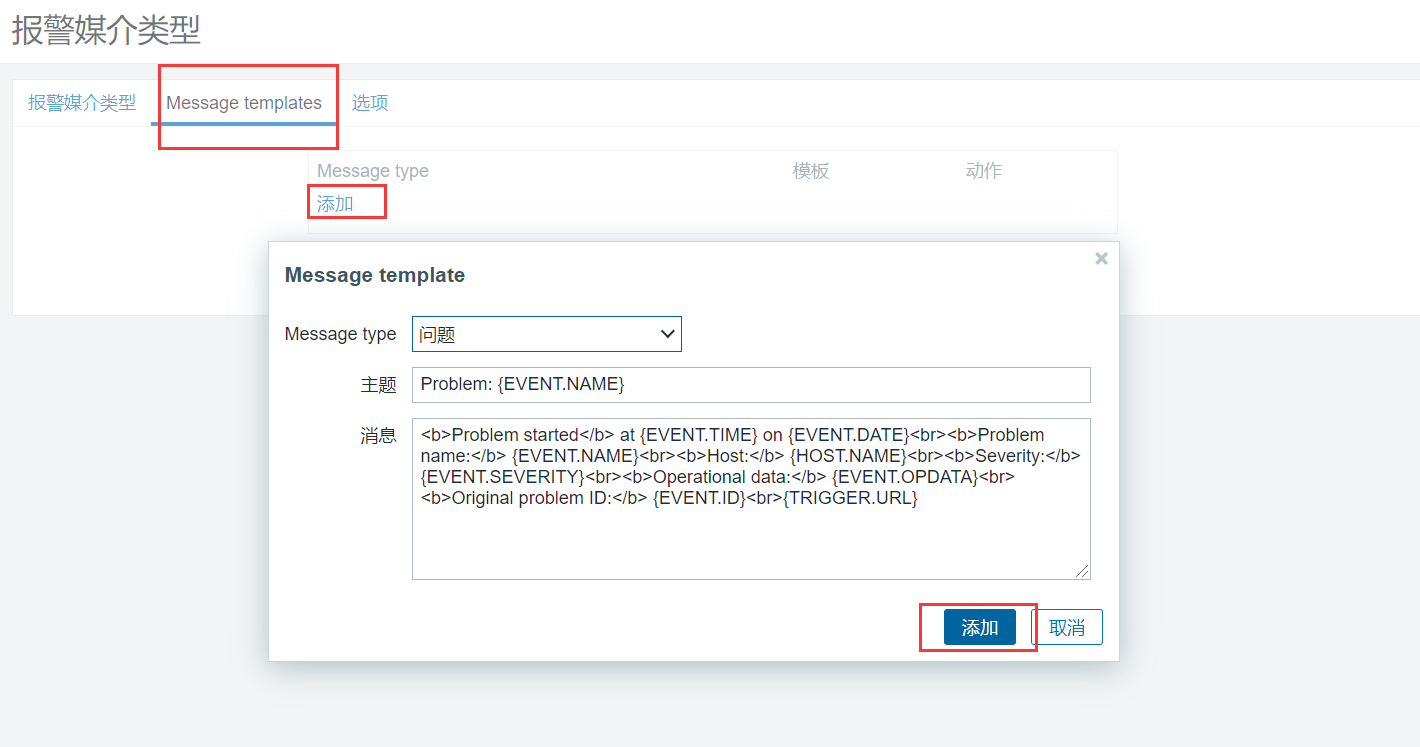
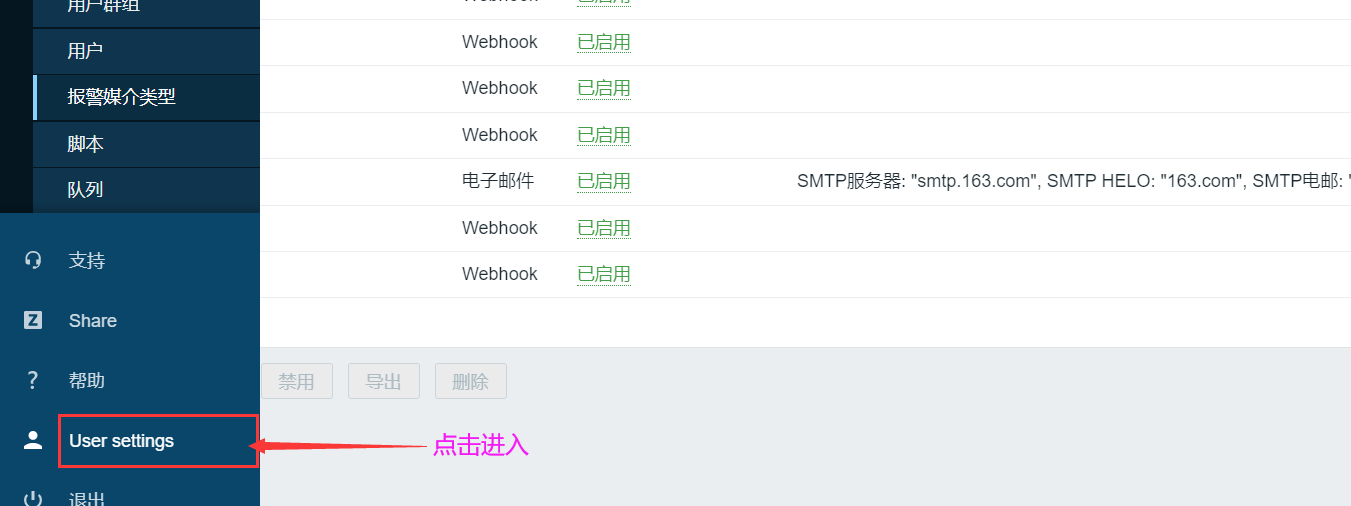
Alarm media ------ click Add
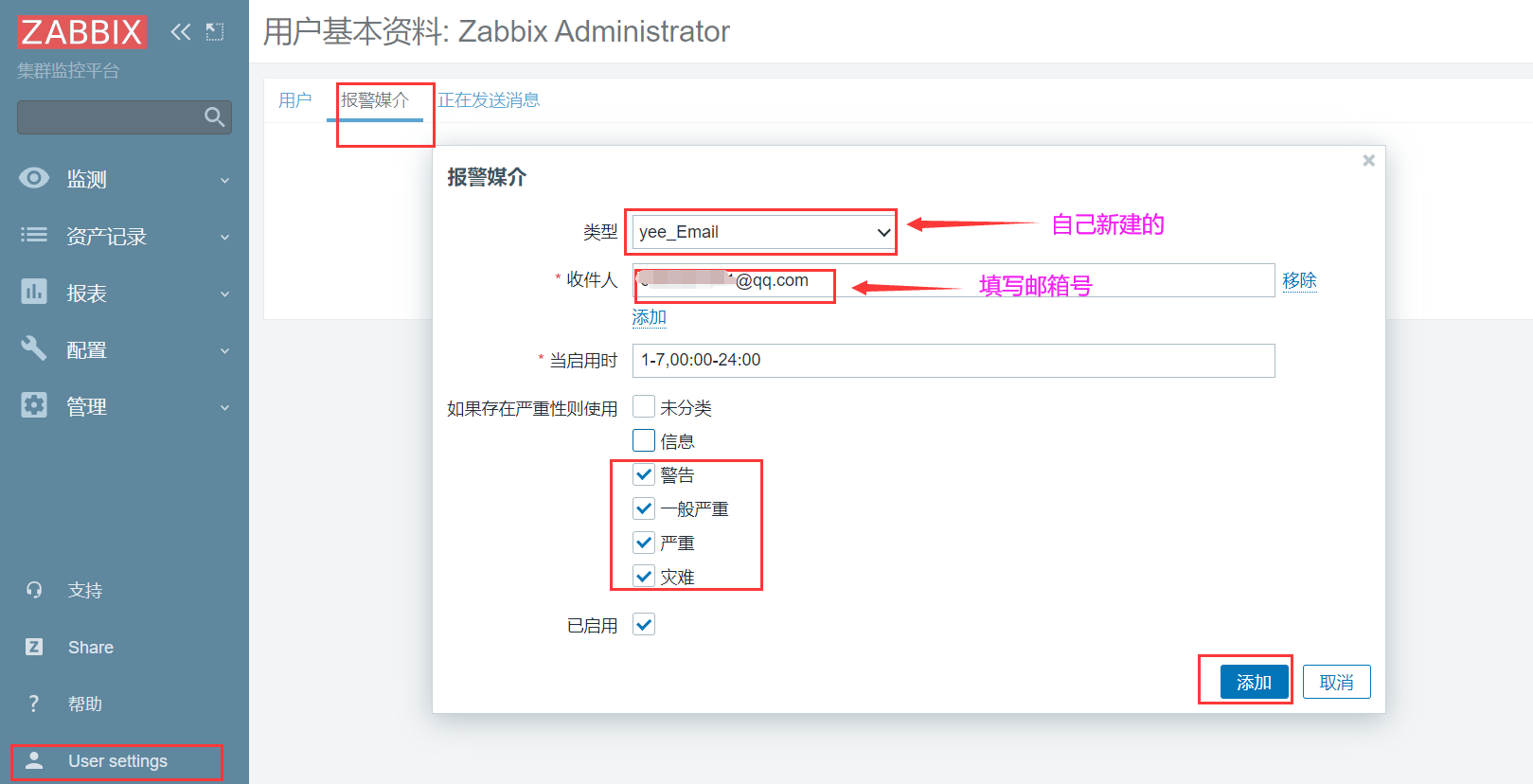
Add unclassified and information

Configuration - Host - action
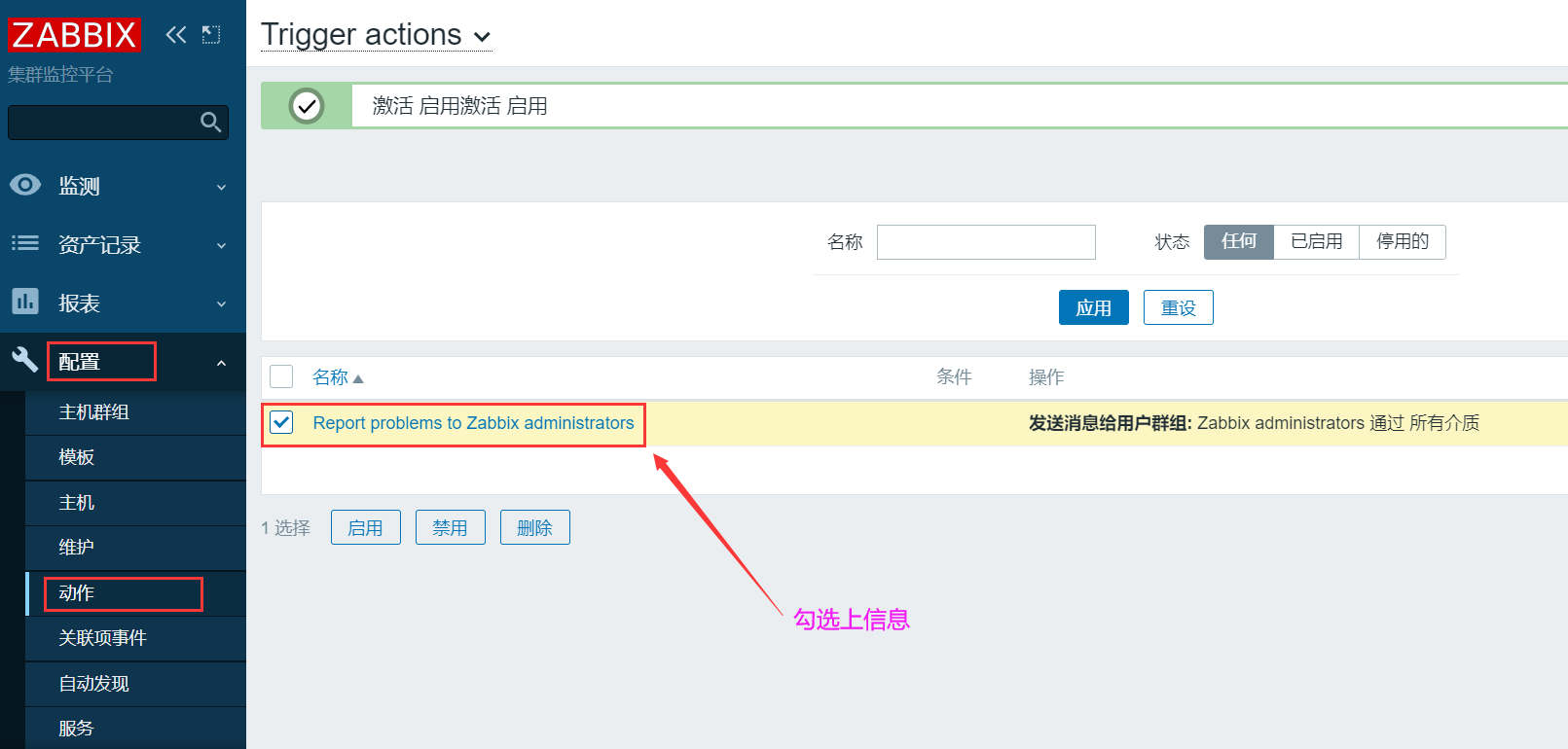
Multiple machines log in to ZABBIX server
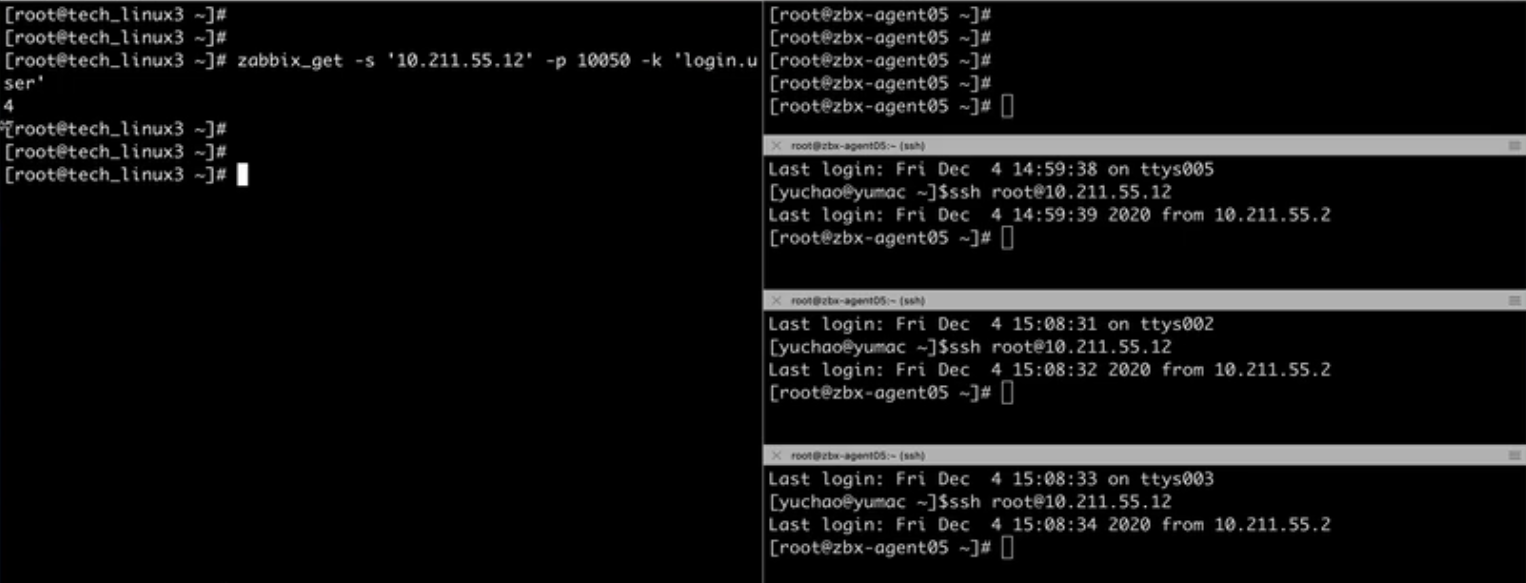
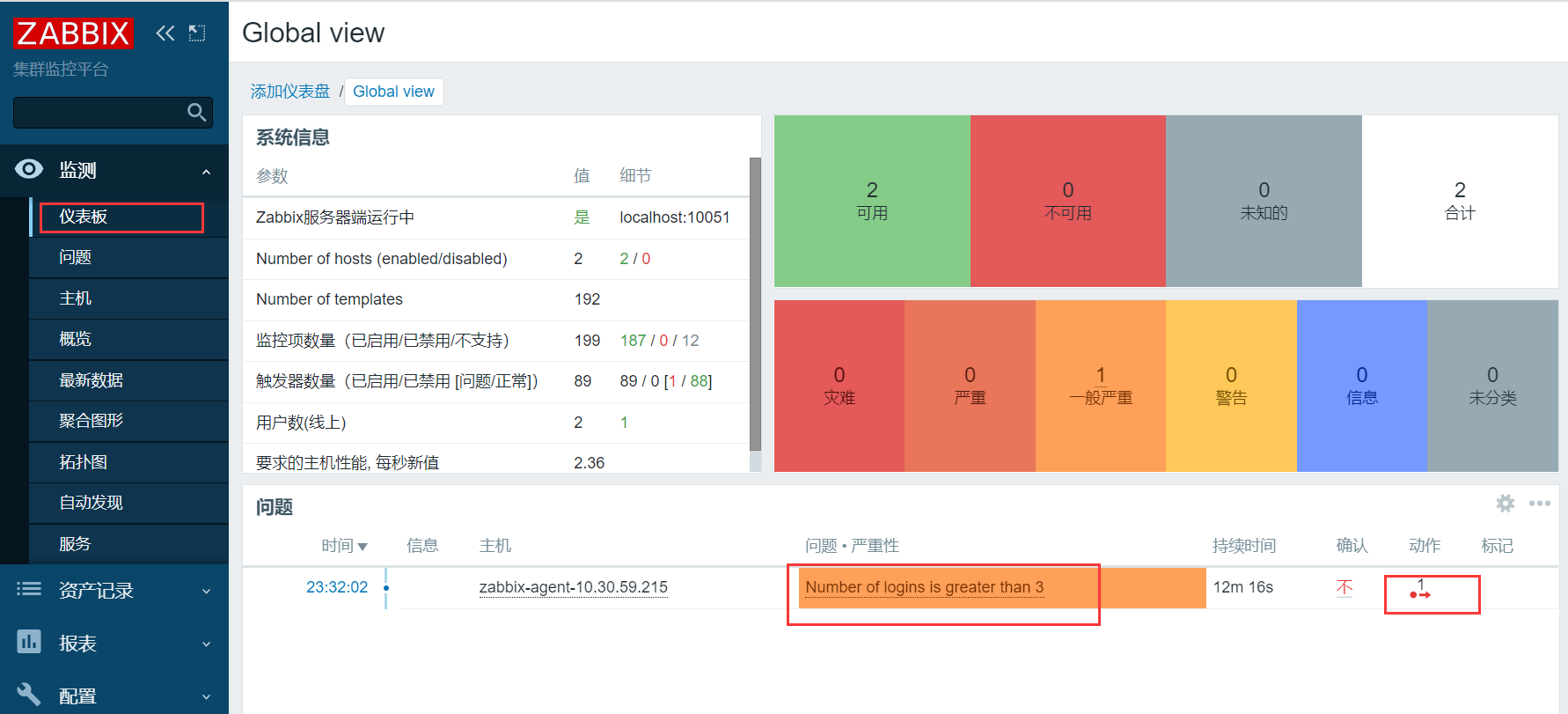
View action
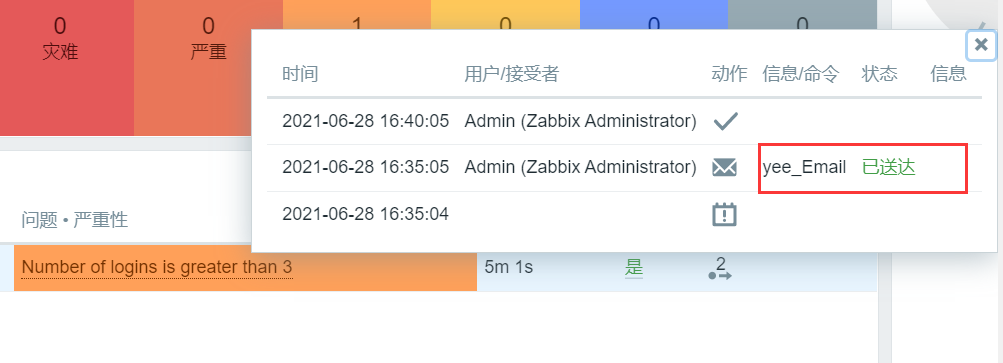
Send mail
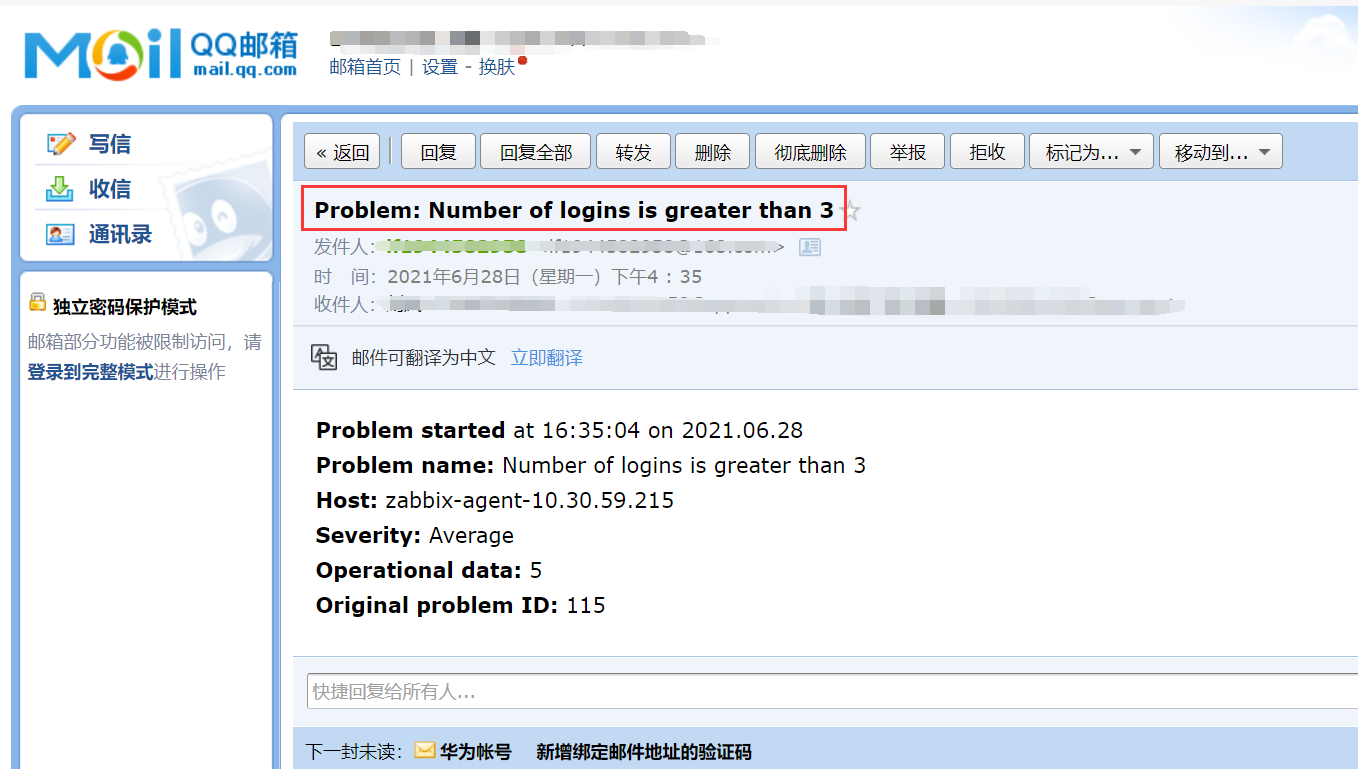
https://www.cnblogs.com/operationhome/p/11072205.html
The following problems are reported: (please refer to the blog above)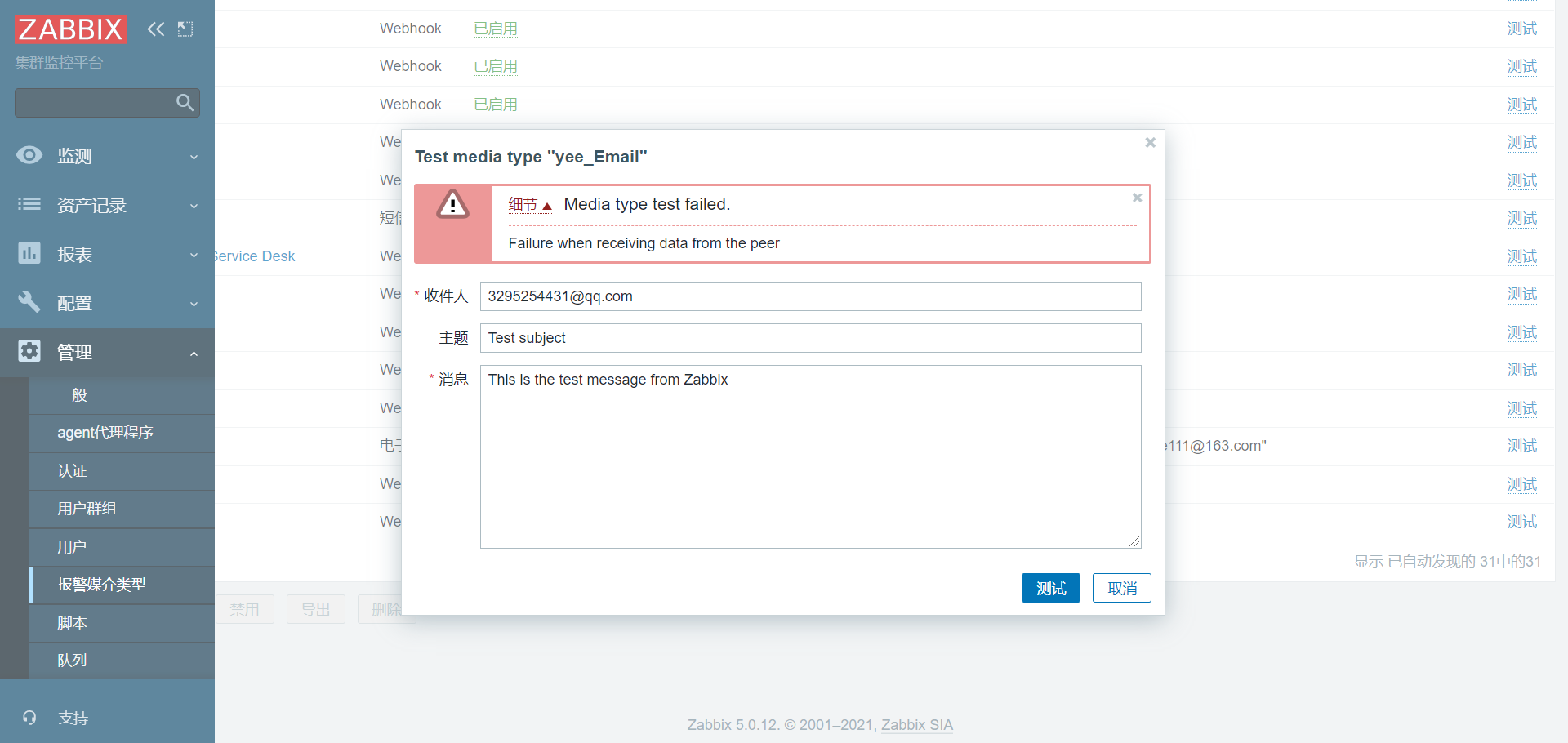
If the above steps are correct:
First synchronize the time and view the log file
[root@zabbix-server01 ~]# ntpdate ntp.aliyun.com
[root@zabbix-agent ~]# date Mon Jun 28 16:31:40 CST 2021 [root@zabbix-agent ~]# systemctl restart zabbix-agent2
[root@zabbix-server01 ~]# tail -n30 -f /var/log/zabbix/zabbix_server.log 28129:20210629:003046.115 failed to send email: Timeout was reached: Operation timed out after 40001 milliseconds with 0 out of 0 bytes received 28126:20210629:003056.651 failed to send email: Failure when receiving data from the peer
Aggregate graphics
Monitor - aggregate graph - create aggregate graph
Aggregate graph ---- zabbix server ---- edit aggregate graph ---- change
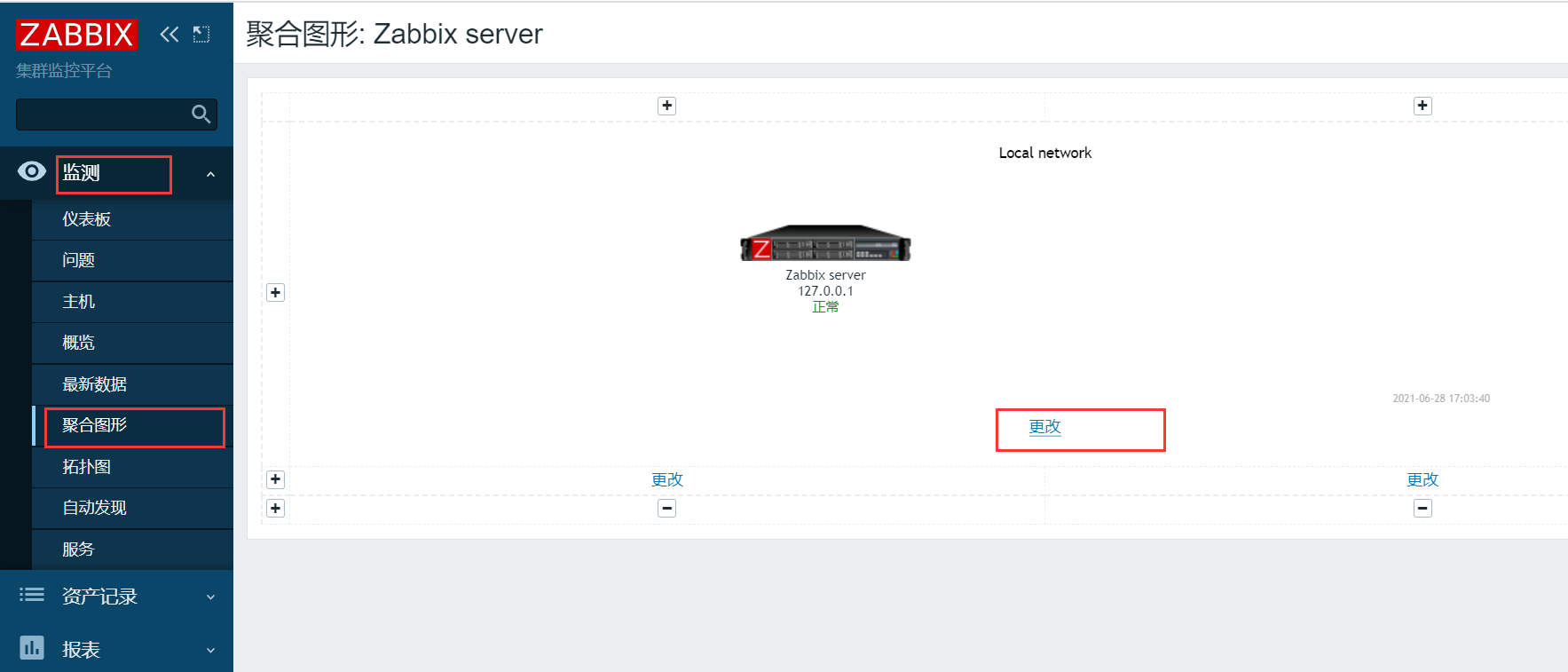
liunx server----zabbix-agent-10.30.59.215----CPU usage
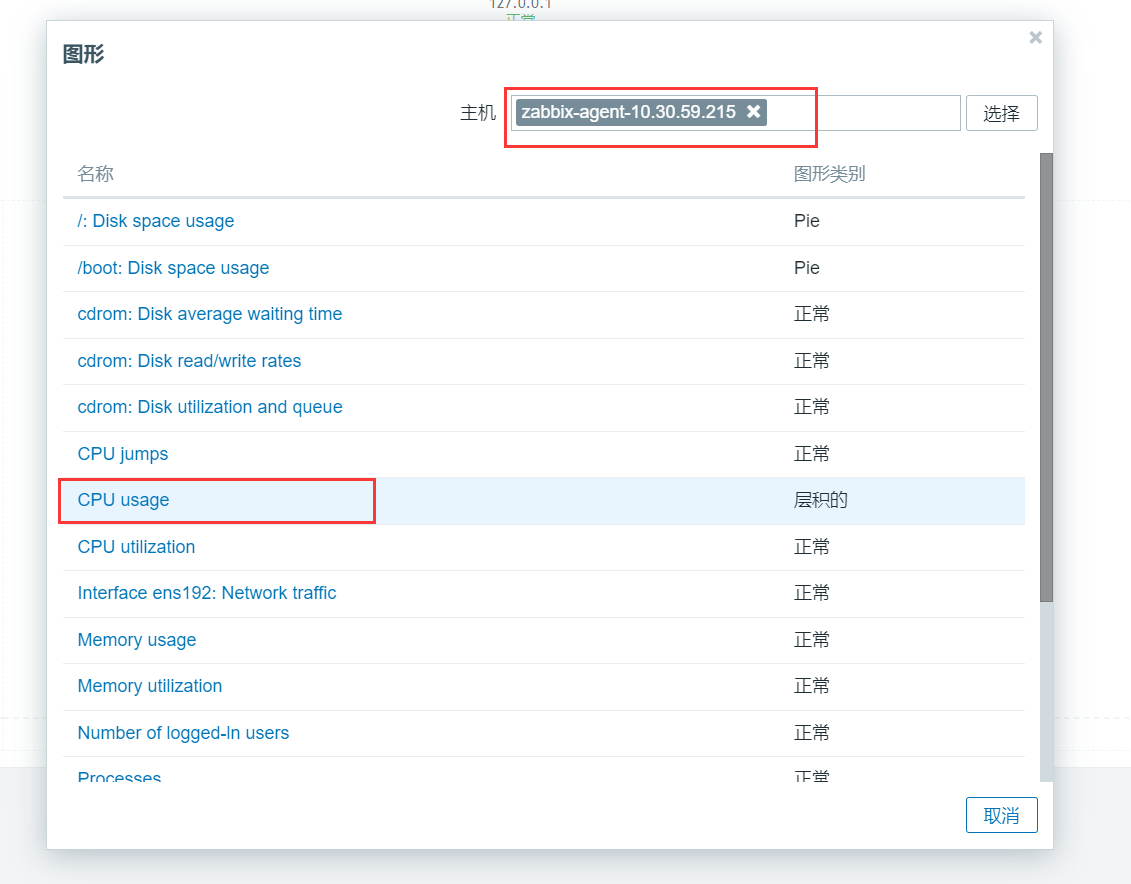
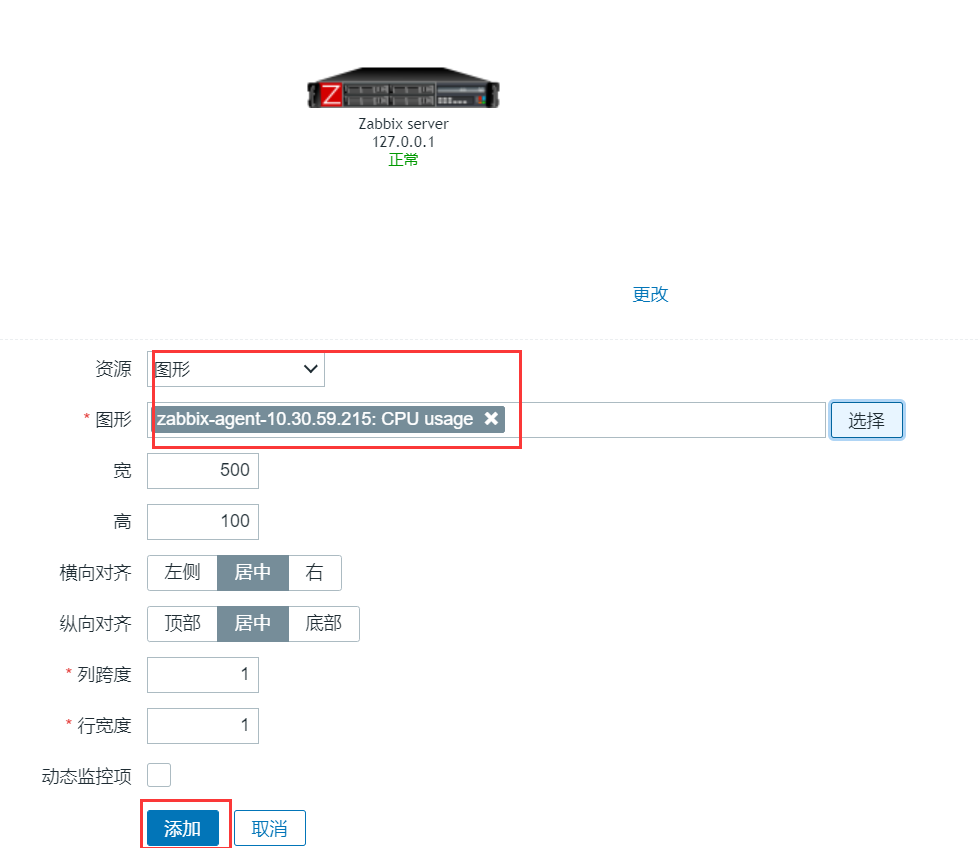
The aggregation graphical interface appears
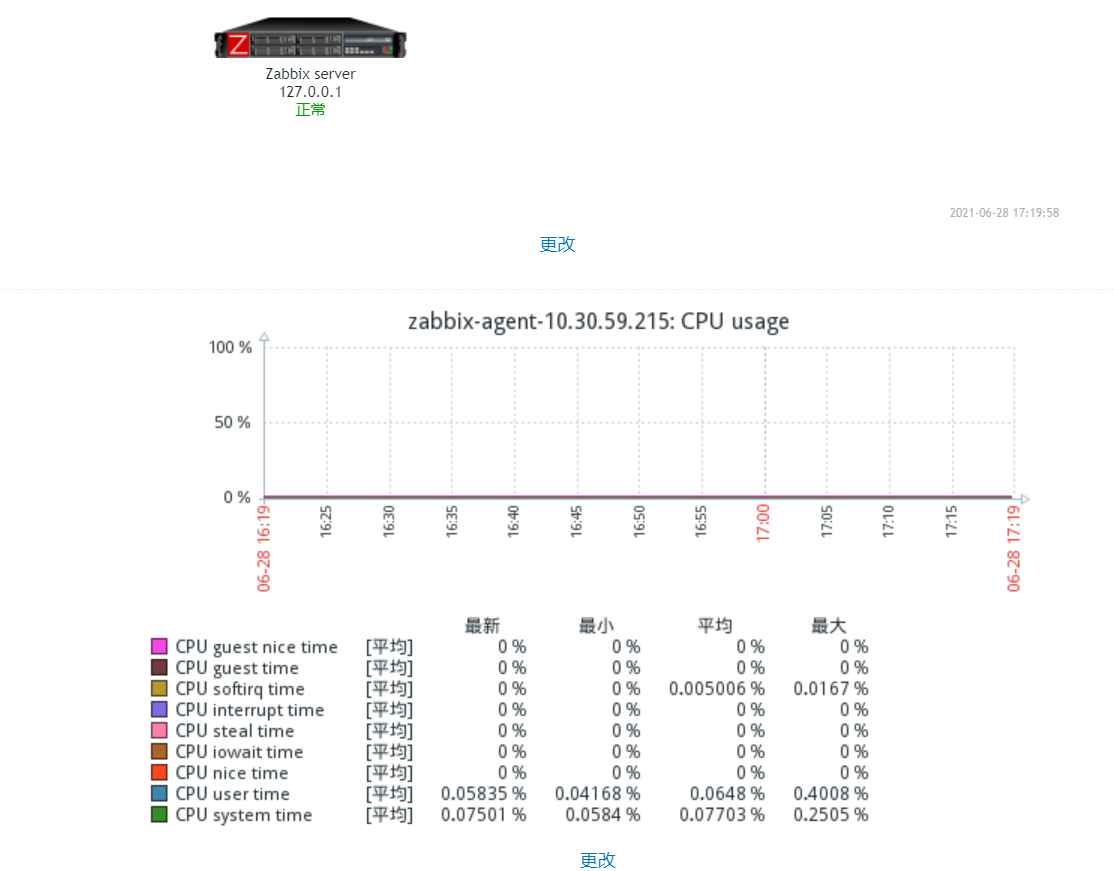
Whole network monitoring scheme
thinking
1. Clone monitoring template
2. Automatic registration and automatic discovery
3. Use zabbix's api excuse and curl language. Or develop your own programming python
All kinds of software used in our schedule provide API interfaces for developers to modify and obtain data.
usb interface of computer is equivalent to usb interface
[root@zabbix-server01 ~]# curl -i -X POST -H 'Content-Type:application/json' -d'{"jsonrpc":"2.0","method":"user.login","params":{"user":"Admin","password":"zabbix"},"auth":null,"id":0}' "http://10.30.59.215/zabbix/api_jsonrpc.php"

Monitoring implementation scheme
Hardware monitoring Perspective
Application service monitoring
Configuration - template - linked template - ZABBIX agent-10.30.59.215 - template
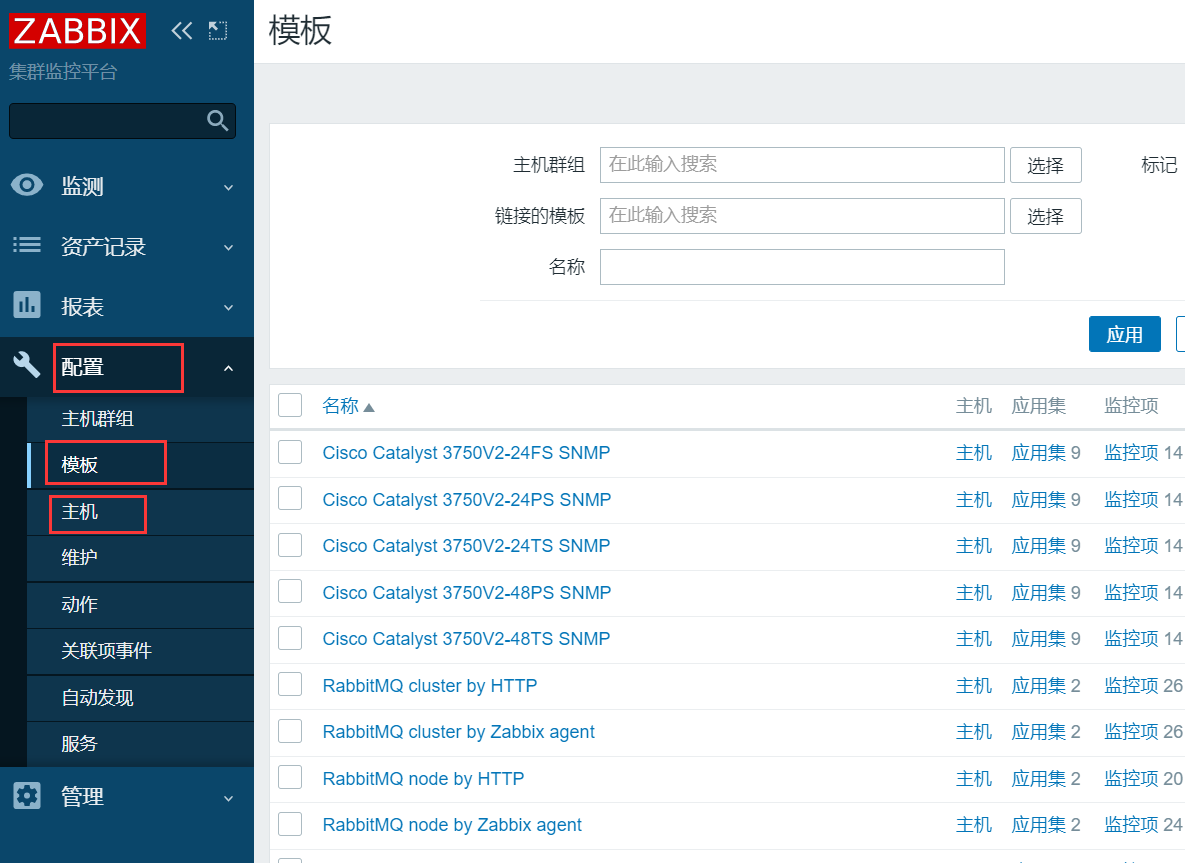
Enter the linked template - view monitoring item = = monitoring - Host - Graphical of host

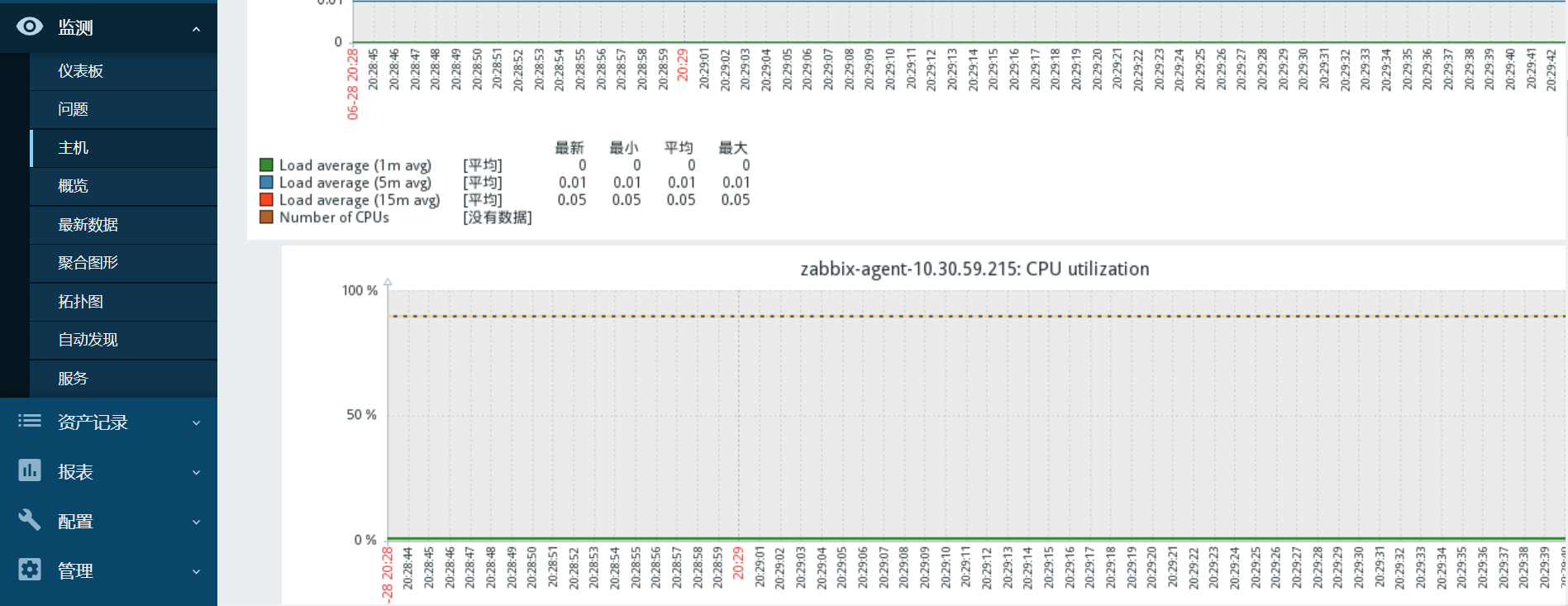
There are a large number of open source templates available on the Internet
1. rsync service monitoring
Monitor whether the server 873 port is alive
For port monitoring, use the key provided by zabbix to search net tep. port[,873]
Push and pull the data to test the effect
2. Monitor whether NFS service is normal
Detect 111 port net through key tep. port[,111]
showmount -e ip | wc -l
3. Monitor whether the mysql database is normal
Via port net tep. port[,3306]
mysql -uroot -p
zabbix has its own mysql monitoring template. You can directly add the association between the main board and the mysql host
4. web server monitoring
net.tep.port[,80]
zabbix also provides monitoring templates for web servers
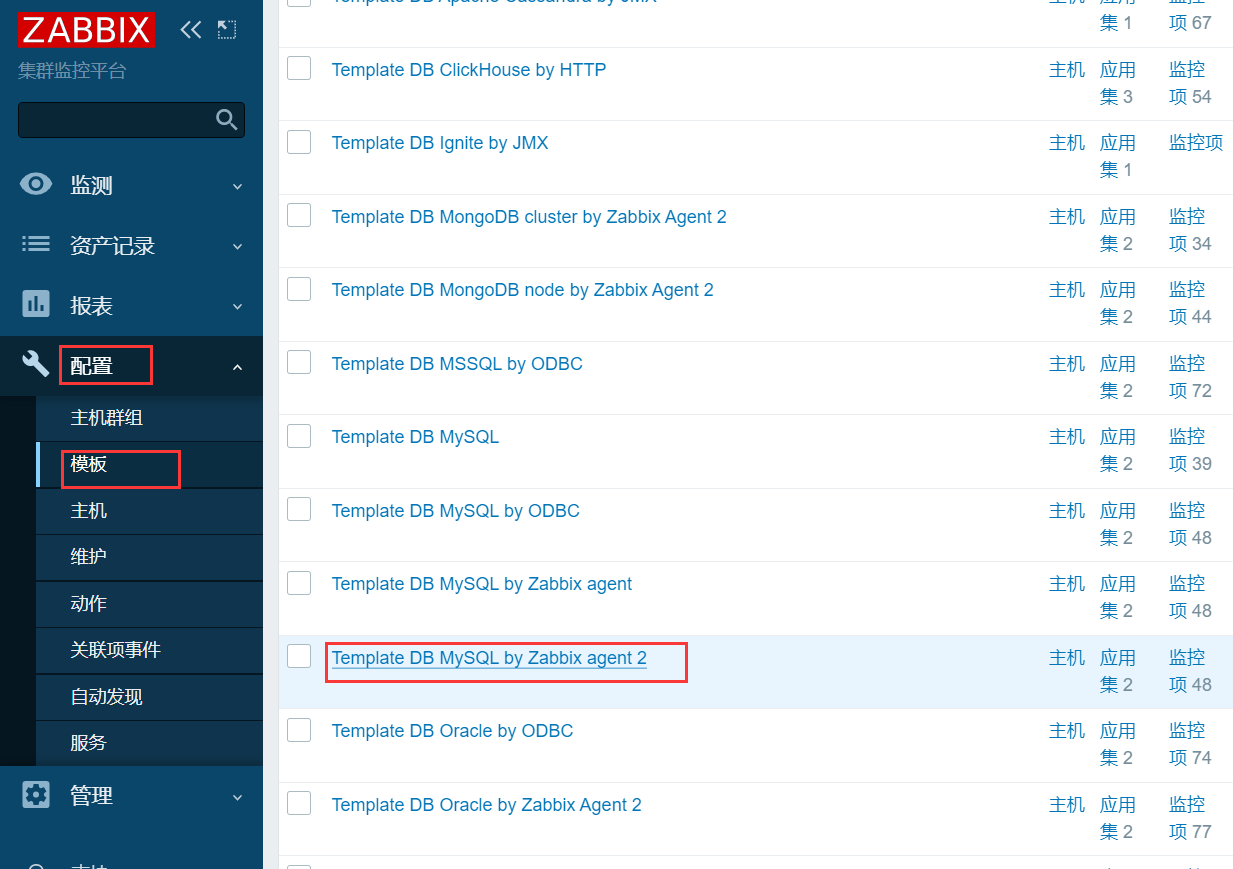
Click the monitoring item to find out whether there is a mysql port

Template DB MySQL - monitoring items
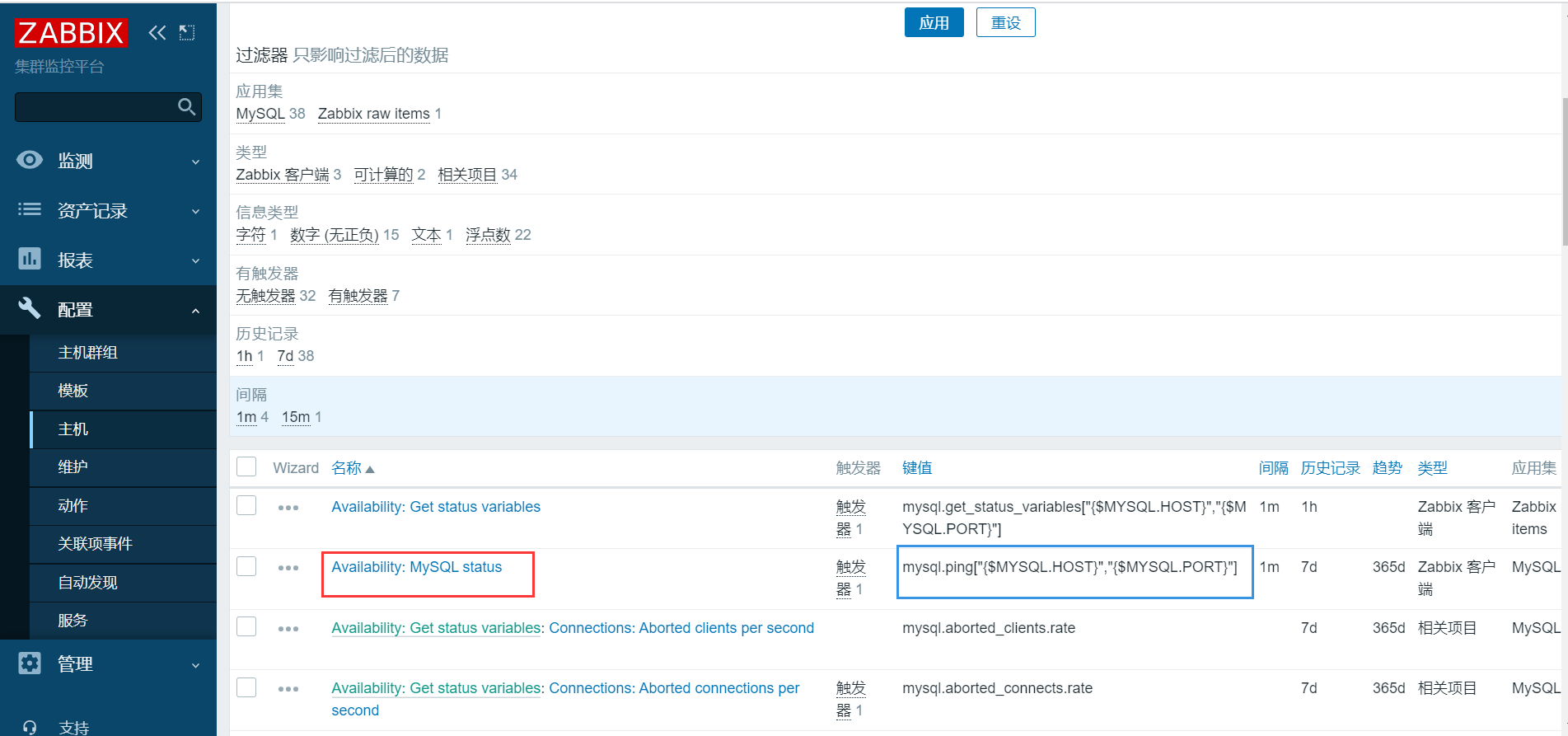 Specific method of monitoring server
Specific method of monitoring server
Port detection command
netstat
ss
Isof
Check whether the port survives in combination with grep.
Check whether the port is alive on the client
[root@zabbix-agent ~]# netstat -tunlp |grep nginx

On the server, query port 80
[root@zabbix-server01 ~]# zabbix_get -s '10.30.59.215' -p 10050 -k 'net.tcp.port[,80]' 1
[root@zabbix-agent ~]# pkill nginx kill process [root@zabbix-server01 ~]# zabbix_get -s '10.30.59.215' -p 10050 -k 'net.tcp.port[,80] 'process is 0 0
Query process information
ps
Connect via client
web Server use curl query mysql use sql Statement connection verification Cache database service, data read / write verification
Custom discovery auto registration
Configuration ----- host ----- delete ZABBIX agent-10.30.59.215
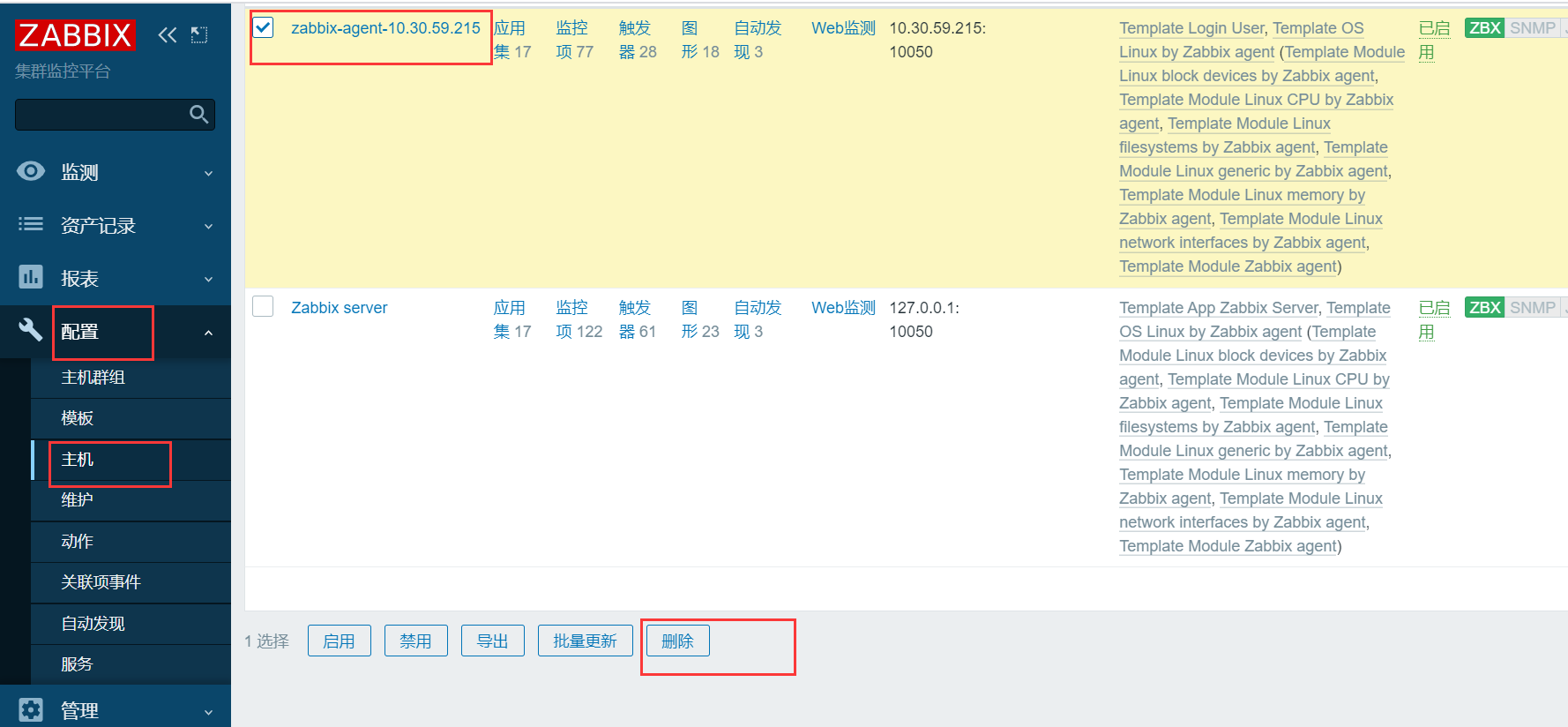
Make sure rabbix-agent2 is running correctly
[root@zabbix-agent ~]# systemctl is-active zabbix-agent2 active
Verify that the client is alive
[root@zabbix-server01 ~]# zabbix_get -s '10.30.59.215' -p 10050 -k 'agent.ping' 1
What is auto discovery, auto registration
1. Auto discovery
zabbix server takes the initiative to find many clients, and then logs in the client information to the server machine.
Disadvantages: zabbix server will be under great pressure
If you define a network segment 100-200, it takes a long time and is under great pressure
2. Automatic registration
zabbix agent2 actively reports its own information and sends it to zabbix server
The disadvantage is that agent2 may not find the server (the configuration file is written incorrectly, or the network is blocked)
3. Difference between passive mode and active mode (in agent2 position)
Passive mode: for agent2, it is the server to find agent2 and get the data
Active mode: agent2 actively sends information to server
Configure hosts resolution
[root@zabbix-server01 ~]# vi /etc/hosts 127.0.0.1 localhost localhost.localdomain localhost4 localhost4.localdomain4 ::1 localhost localhost.localdomain localhost6 localhost6.localdomain6 10.30.59.205 zabbix-server01 10.30.59.215 zabbix-agent
Auto discovery configuration
Configure ----- auto discovery ----- Local network
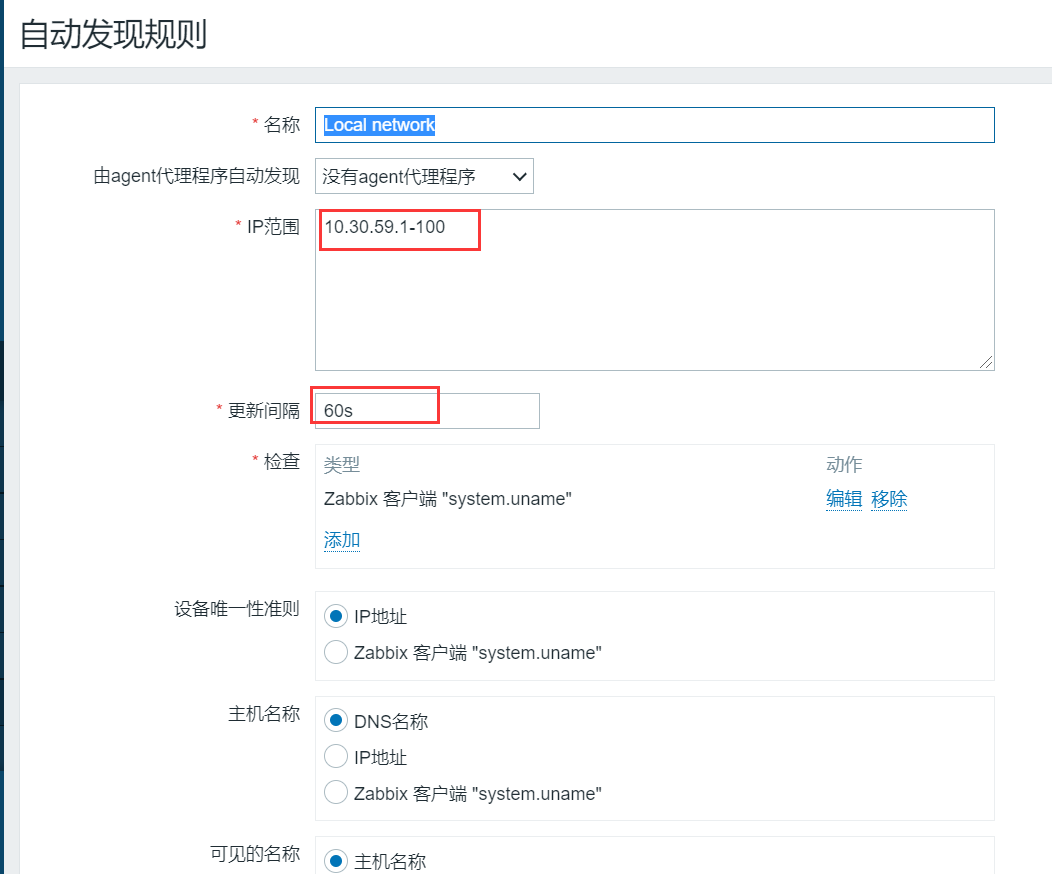
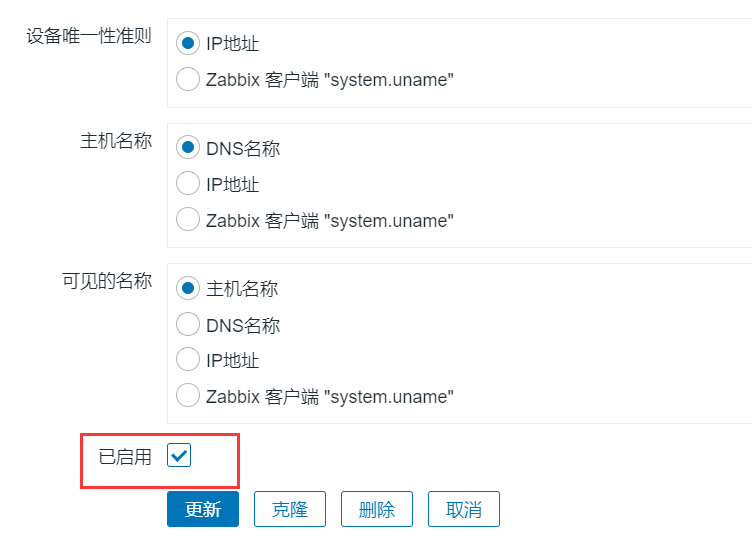

Configuration - actions - Discovery actions
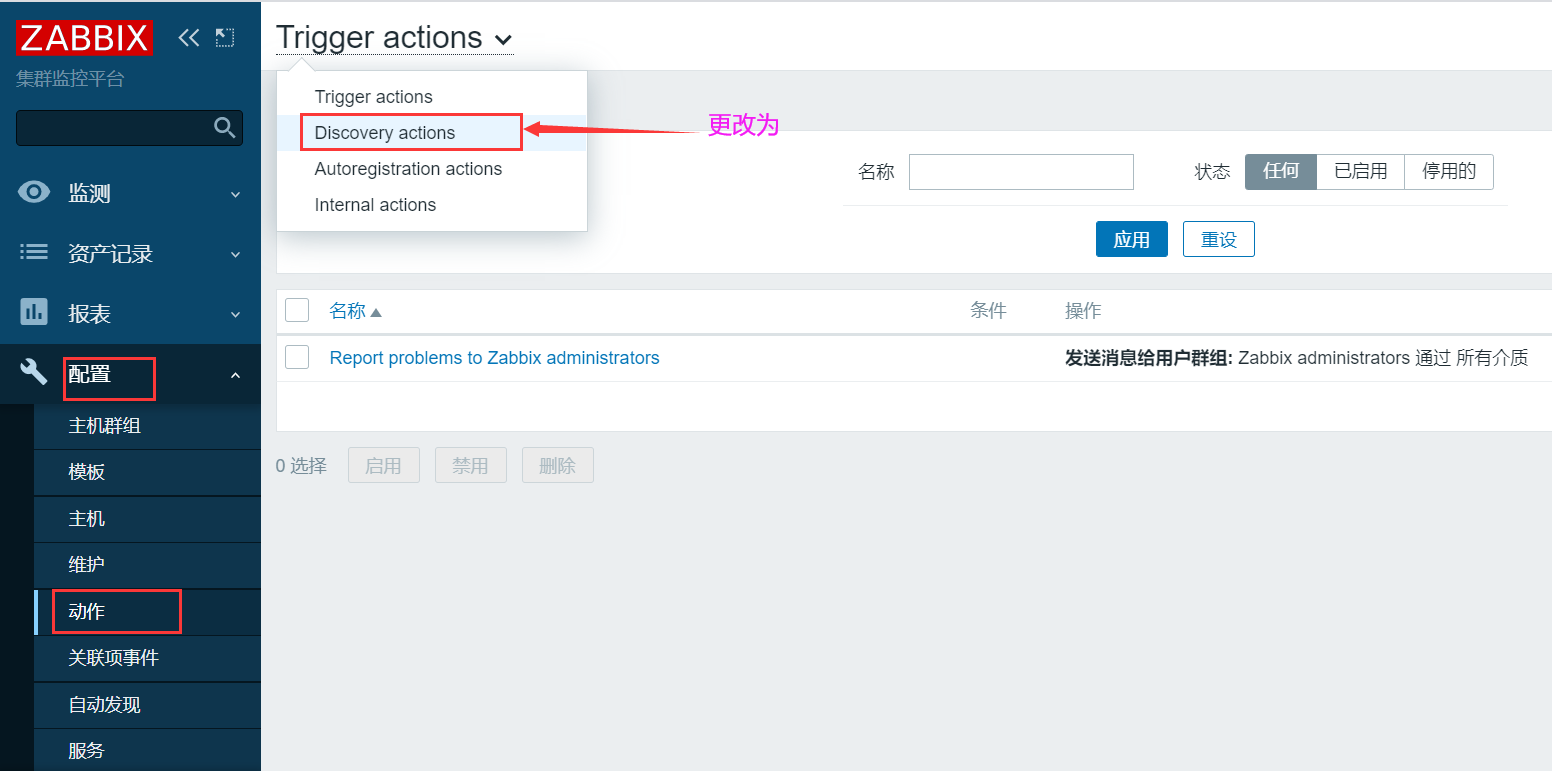
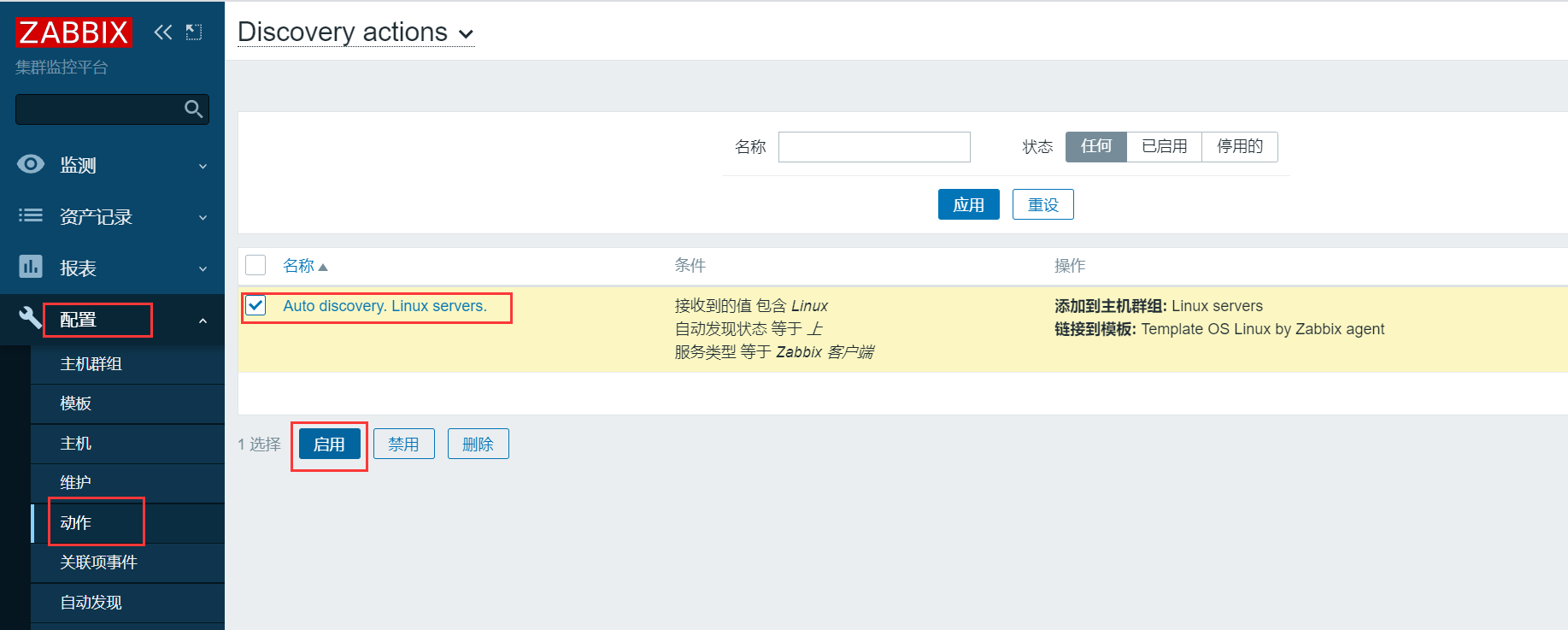
Click auto discovery Linux servers - default update
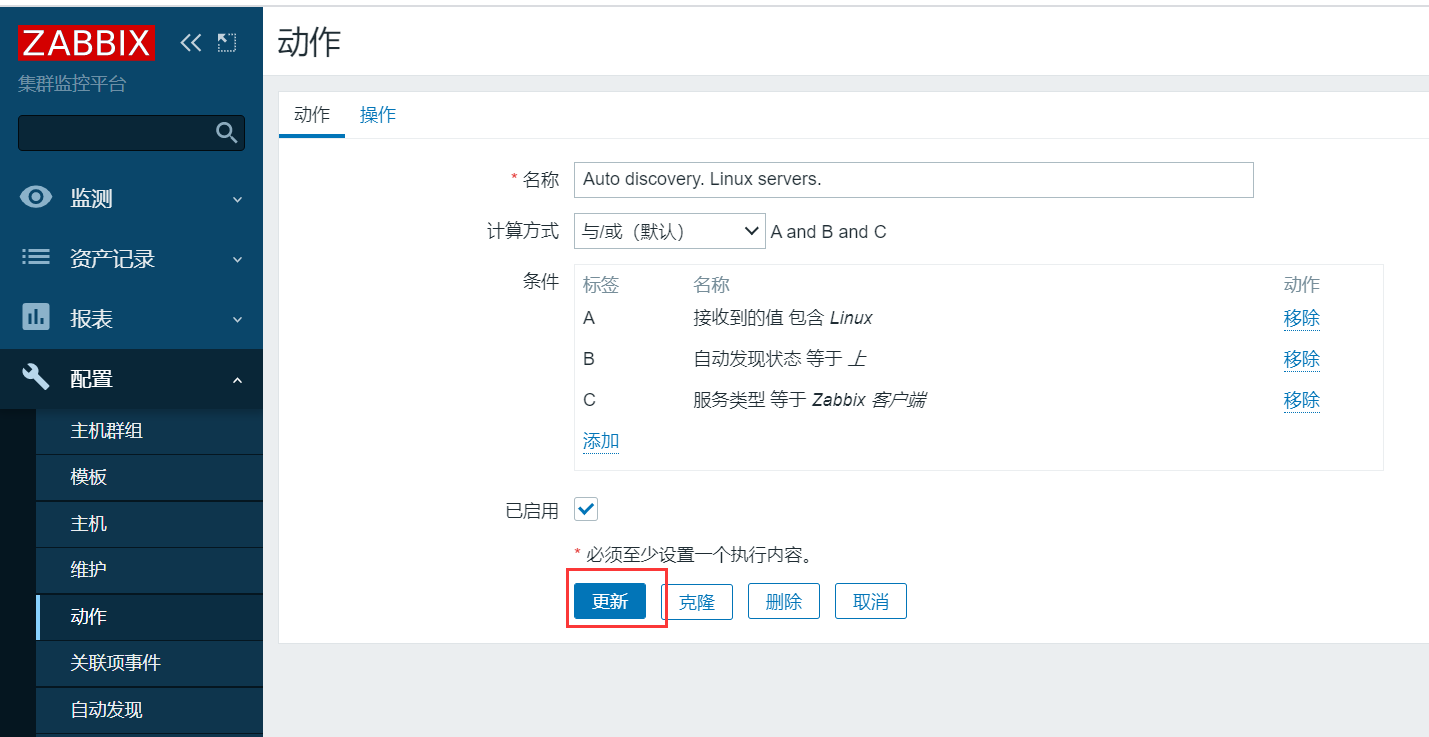
Configuration - Host - wait 60 seconds
Check (auto discovery - action - host appears)
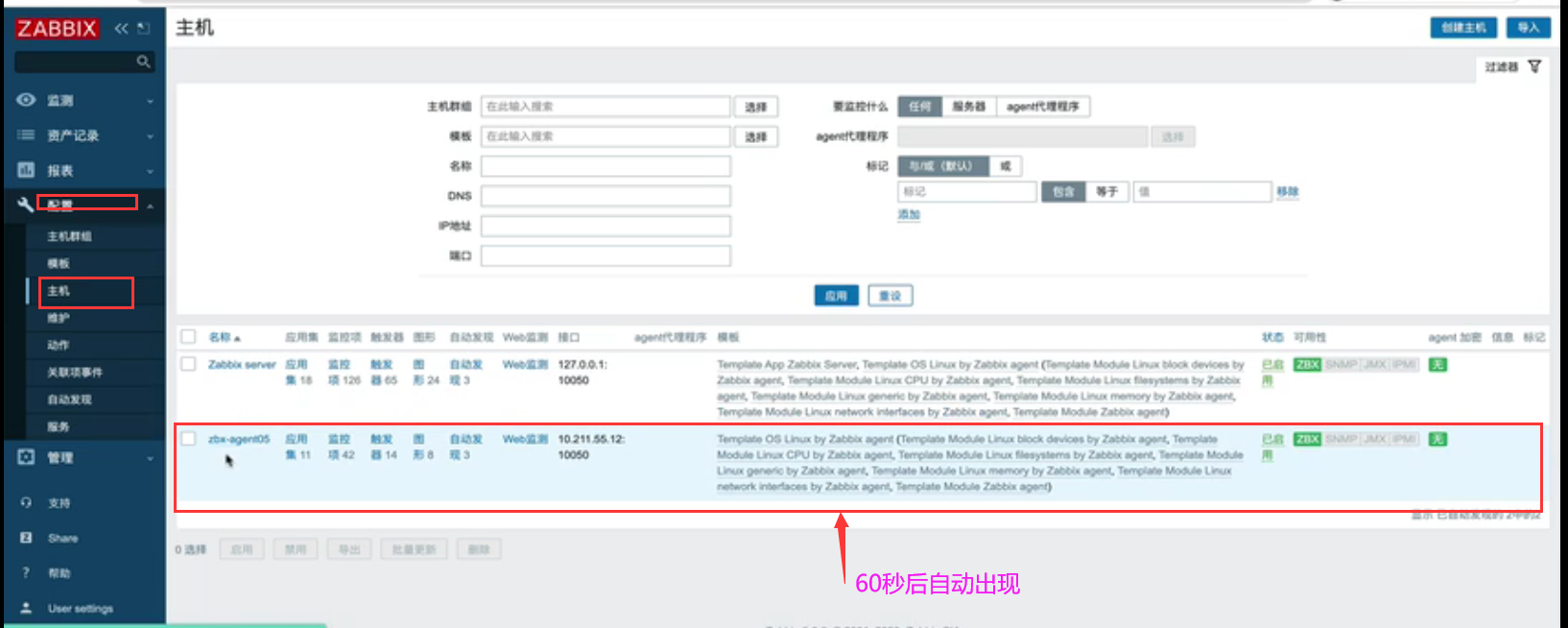
view log file
[root@zabbix-server01 ~]# tail -f /var/log/zabbix/zabbix_server.log
Automatic registration, active mode
1. Prepare two machines
zabbix-server01
zabbix-agent
Configuration ---- autodiscover disable ---- host --------- (client) disable / delete
Configure agent2 file
[root@zabbix-agent ~]# vi /etc/zabbix/zabbix_agent2.conf Remove comments HostnameItem=system.hostname [root@zabbix-agent ~]# grep -Ev '^#|^$' /etc/zabbix/zabbix_agent2.conf filter PidFile=/var/run/zabbix/zabbix_agent2.pid LogFile=/var/log/zabbix/zabbix_agent2.log LogFileSize=0 Server=10.30.59.205 ListenPort=10050 ServerActive=10.30.59.205 #Write server address Hostname=zabbix-agent HostnameItem=system.hostname Include=/etc/zabbix/zabbix_agent2.d/*.conf ControlSocket=/tmp/agent.sock [root@zabbix-agent ~]# systemctl restart zabbix-agent2 restart
Verify whether agent2 is connected
[root@zabbix-server01 ~]# zabbix_get -s '10.30.59.215' -p 10050 -k 'agent.ping' 1
Configuration - actions - Autoregistration actions - create actions
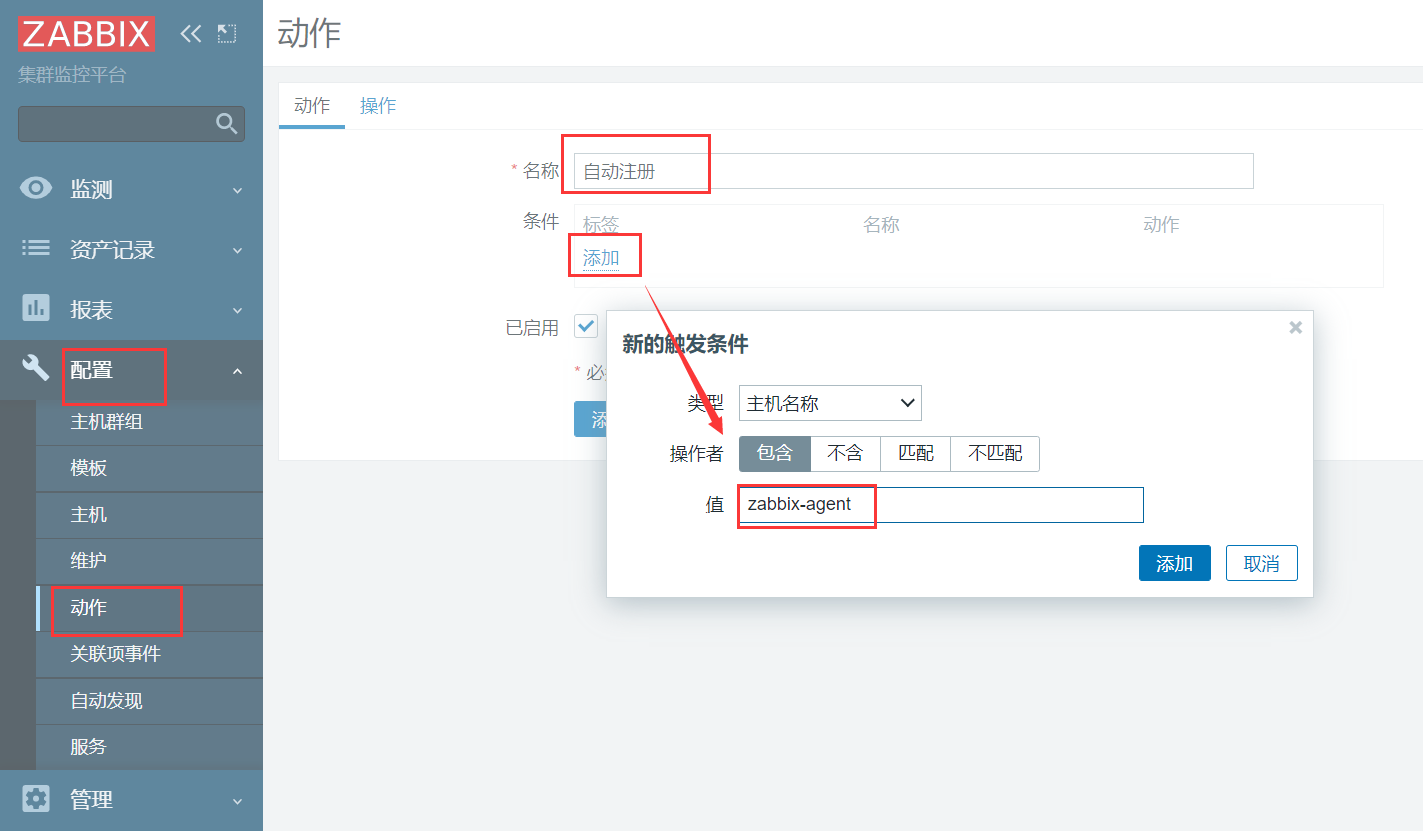
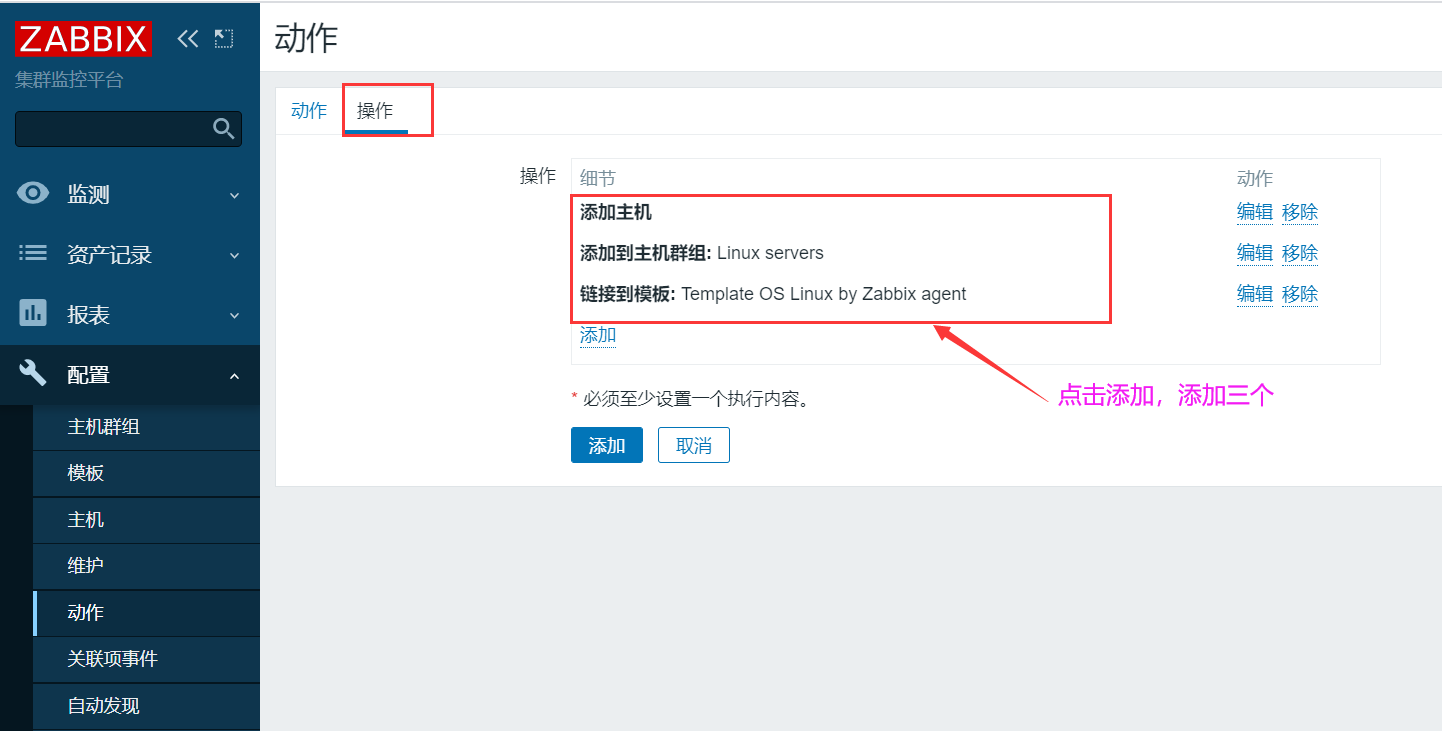
You can ping the client
[root@zabbix-server01 ~]# ping zabbix-agent PING zabbix-agent (10.30.59.215) 56(84) bytes of data. 64 bytes from zabbix-agent (10.30.59.215): icmp_seq=1 ttl=64 time=0.253 ms 64 bytes from zabbix-agent (10.30.59.215): icmp_seq=2 ttl=64 time=0.265 ms
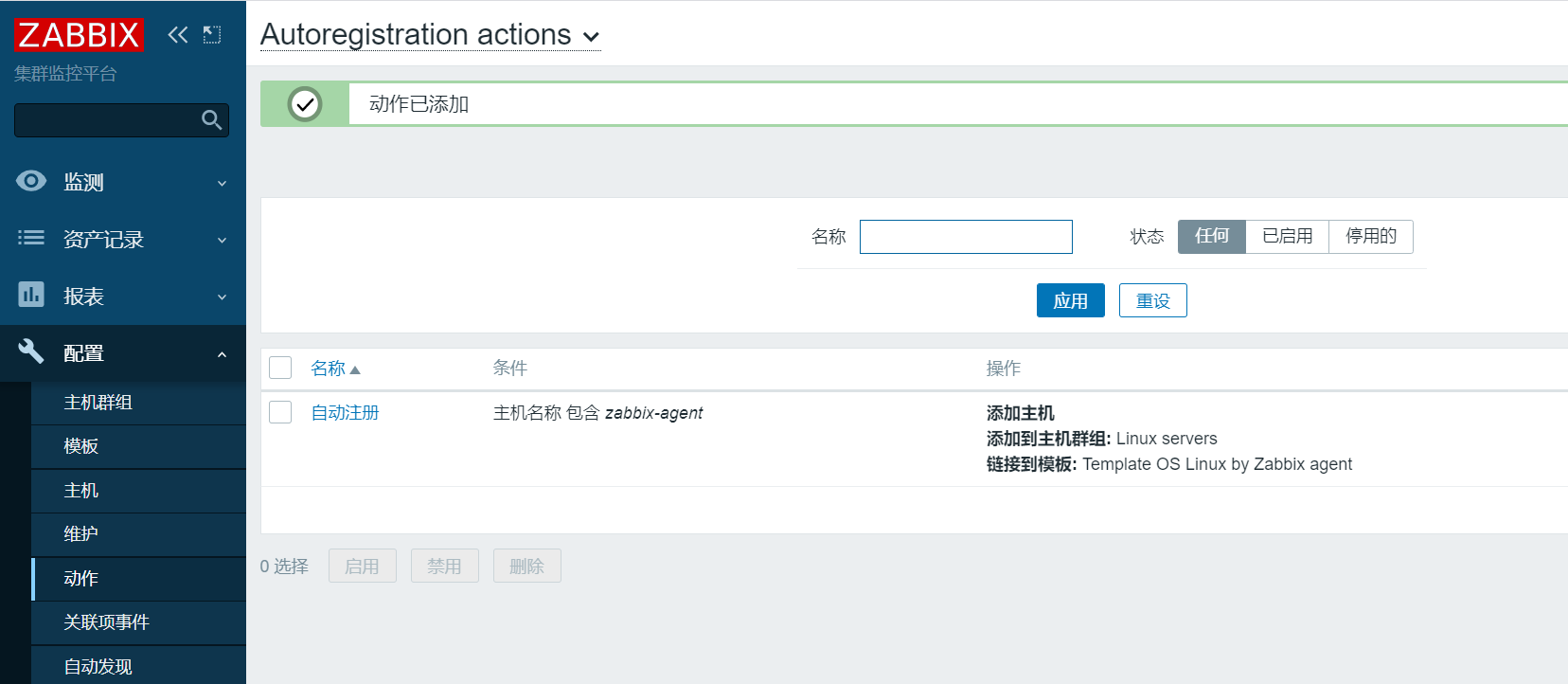
view log file
[root@zabbix-server01 ~]# tail -f /var/log/zabbix/zabbix_server.log 28117:20210629:090407.388 enabling Zabbix agent checks on host "zabbix-agent": host became available
